Sometimes an empty wall, a wide space with nothing on it, seems like a canvas waiting for someone to touch it up with some exotic color or texture. Then, we might see a large room that practically calls out to be divided into smaller spaces – perhaps with a gorgeous screen or drape. Or that wall, now, wouldn’t it better with a big, beautiful frame of some kind to add some interesting dimension?
Imagine a house where normal furnishings – doors, windows, curtains, light bulbs, wardrobes, etc. – are important not just for their functionality, but for their artistic interest. We found that many of the pieces featured at the Bangkok Art Biennale 2018 international festival of contemporary art created major transformations in the décor of a number of interior and outdoor spaces, bringing new aesthetics to familiar places.
If we bring a work of art into a room to replace some more conventional furnishing, it’s more than simply aesthetic enhancement: it has tangible value, too. In this story LivingASEAN will take you to look at some art works that could be seen both as art and as decoration, pieces from BAB 2018 shown at the Bangkok Art and Culture Centre (BACC), where art often likes to have conversations with the spaces around it.
Soaked Dream: Photos of dreams and the future amid darkness / composition

Soaked Dream is a suite of photographs by Bangladeshi artist Firoz Mahmud. It shows people in a number of poses, all wearing bright green eyewear of Firoz’s creation designed to suggest hidden meanings found looking into dreams, or perhaps into the future. Eyewear of different styles are worn here by a refugee family, by displaced persons, and by members of an ethnic tribal minority, all seeking light in the dark. Here Firoz has created a narrative representation calling for social change, calling attention to difficulties of the Rohingya tribe that fled from Burma to the land of Bangladesh.
Beautiful photographs or other pieces of art that express meaning can expand their narratives by being set in a decorative arrangement on a wall – that is, if it’s just the right wall. This requires attention to the size of the frame, distance between photos, height of placement. Generally 1.2-1.5 meters high will catch a person’s line of sight, and pictures should be 5-7.5 centimeters apart. For contrast, a picture may be set at a different angle than the others, or shown in a contrasting proportion. Notice, above, one of Firoz’s pictures displayed in two versions, one taller and narrower than the other. This creates a transition and prepares us for the pictures on the right side.
You can see this work on the 8th floor of the Bangkok Art and Culture Centre (BACC) between October 19th, 2018 and February 3rd, 2019.
Art tunnel/sculpture: a passage back to childhood, right here in the front plaza.

This piece is great for the little kid in the family, or for anyone who wants to get the feeling of once again being a child. Shelter from the Stars 2018 is an elegant 5-meter-long tunnel sculpture in front of the Bangkok Art and Culture Centre, the work of Marc Schmitz, a German artist and curator. The sculpture makes a statement about empty space which you’re not likely to find in many urban places, offering a happy respite from the decadence, chaos, and depression of the city.
If you were to put this work in another location, it might improve the aesthetics of a small garden in front of a house, perhaps on the edge of a small pond or fountain – of course, if little kids are around, safety is a consideration – or in the shade of a big tree. It would make a special garden or private resting area even more special.
You can see this work in the plaza fronting the BACC from October 19, 2018 to February 3, 2019.
Faith…Life / divisions and boundaries

The work Faith … Life B.E.2560 by Arichama Pakapet of the group Muslimah Collective, a Muslim female artists’ group in Chana District, Songkhla: mixed media work from woven natural materials, 300 x 200 cm.
Connections and divisions, separating spaces with clear-cut boundaries, can add beautiful highlights to living rooms, dining rooms, reading corners, or other rooms. Arichama Pakapet’s woven piece Faith … Life B.E.2560, can be used as a screen to block a view, or to cleanly separate area boundaries in a semiformal way without making a space look too closed off or stuffy. Importantly, it can be hung as a temporary decoration without the necessity of taking time and expense to build a permanent structure such as a wall. This beautiful piece of art is easily moveable and adds dimension and interest to the space.
The Muslimah Collective was formed by Keeta Isran of Narathiwat, Nuriya Waji from Sai Buri District and Kusofiyah Nibuesa from Panare District in Pattani, and the artist Arichama Pakapet herself. Her art conveys narratives of ways of life, inner feelings, and loss. It is like a mirror, reflecting the hope of the spirit that lives of peace and quiet happiness may be lived in the three border provinces of the South.
The work Faith . . . Life B.E.2560 by Arichama Pakapet can be seen on the 7th floor of the BACC from October 19, 2018 to February 3, 2019.
Check Point | Step through, Enter out

Doors come in many forms: there are sliding, folding, concertina, roll-up, and steel accordion doors. Every house has to have one just to get in and out, but Myanmar’s Nge Lay has given us something more special than that.
Nge Lay works with women’s issues. Society often views women as weak, and denies them equal rights. Her piece The Check Point, harks back to checkpoints she had to pass through with other women in a sweatshop working with longyi, a popular fabric 8 ethnicities in Myanmar sew into skirts. This piece is cut into a vagina-like shape, symbolizing the fact that every one of us is born through the vagina of a mother.

“I created this work with a feeling of both satisfaction and dissatisfaction, at the same time proud and sad at being a woman. I want visitors to walk through this door and experience it not as a dirty or depressing thing, but as expressing the value of motherhood, nature, and the land,” explains Nge Lay.
The significance of this “door,” according to Ngay, is not as a solution to a problem. Although used here to divide outside and inside space, it also sparks a sudden realization of its deeper meaning: a way to pass through boundaries. Standing alone as if torn from its original frame, it is a vivid reminder of that elemental passage.
You can see this work on the 7th floor of the BACC from October 19, 2018 to February 3, 2019.
Without light, but it leads the line of sight | instead of light: Century Buds

Century Buds is another piece by Shelter from the Stars 2018 creator Marc Schmitz. It looks like a pair of giant “cotton buds,” or Q-tips, foreign objects set here by a visitor from another world, or perhaps giant ear-cleaning tools for an elephant here on this planet.
The two primary components were constructed of copper and polished chromium-plated steel, with a soft bud formed on the end of each. Marc’s intent was to suggest a cleaning of the spirit. Looking at this set we might imagine a super-cool lamp, or perhaps a luxury chandelier. It catches the eye, drawing the line of sight to it, especially when it is set up high, in a “double-volume” room. At night, when the lights are on, it adds a sense of warmth. Perhaps it was created on a planet with no bright lights of its own to seamlessly radiate the energy of creativity instead of the light it leads us to expect.
This work can be seen on the 8th floor of BACC from October 19, 2018 to February 3, 2019

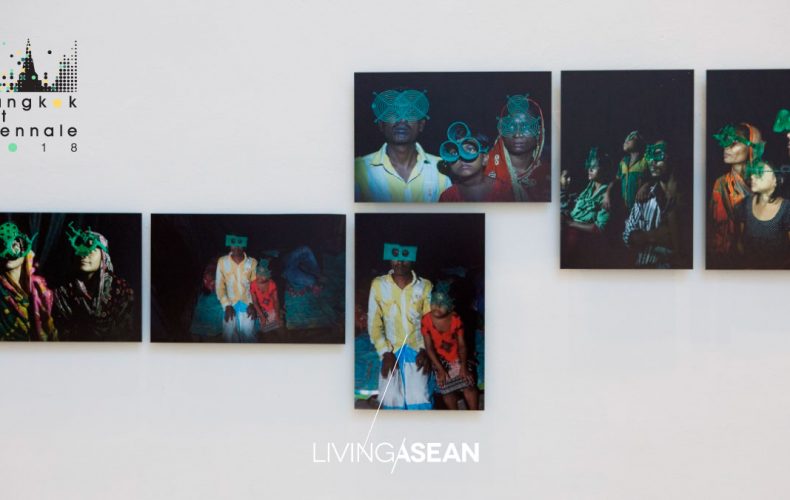

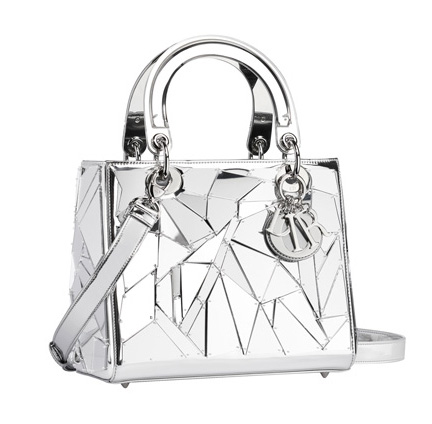

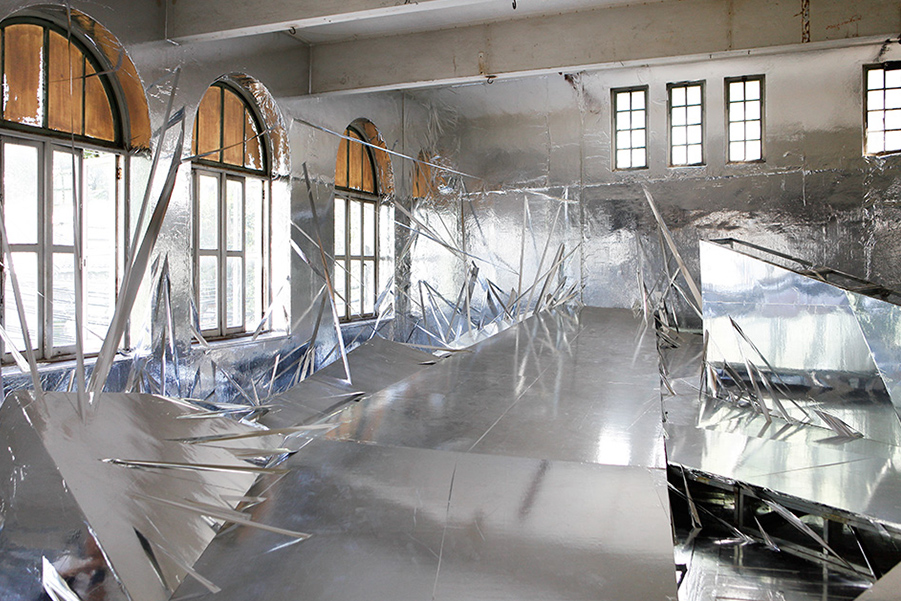
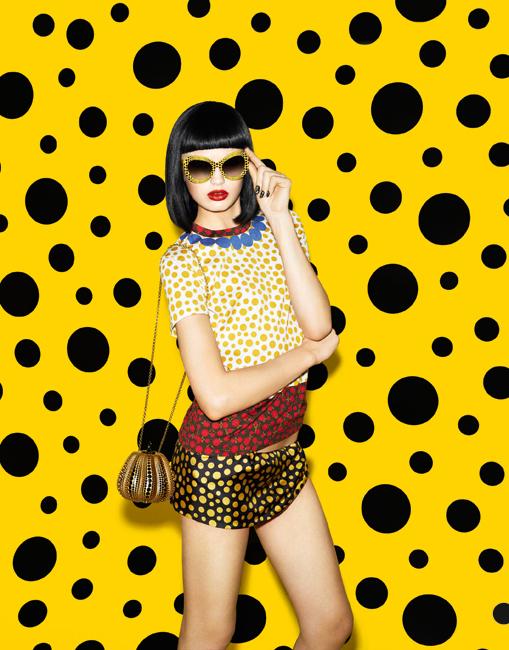
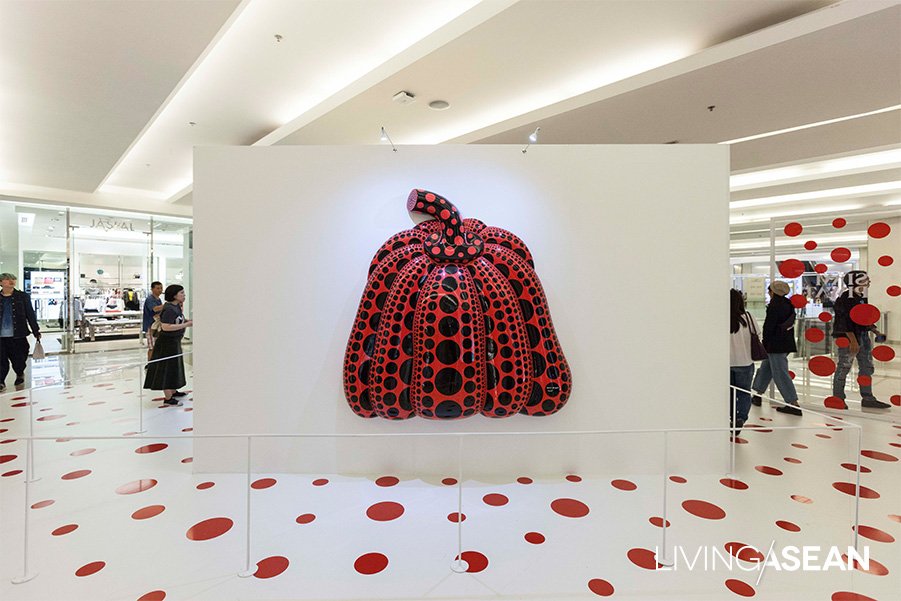
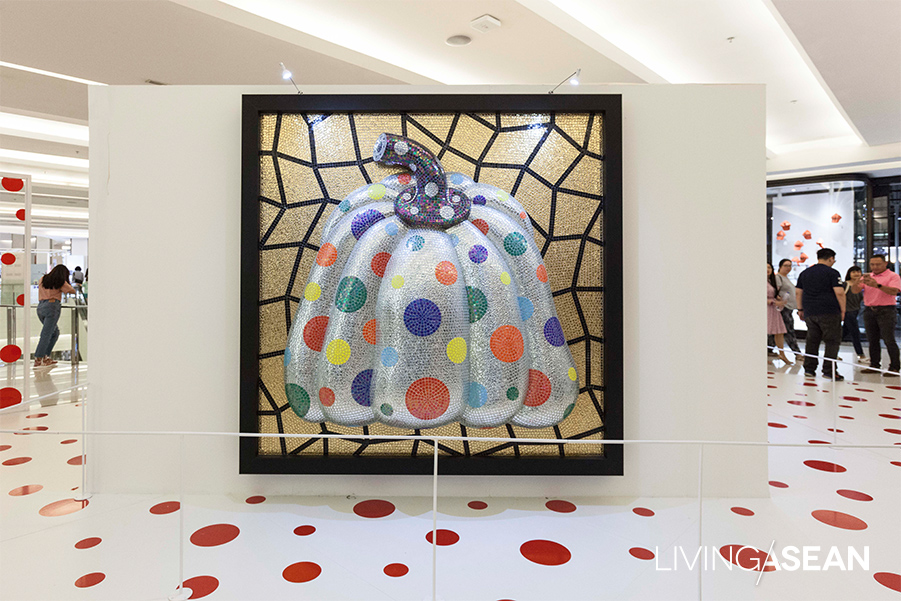
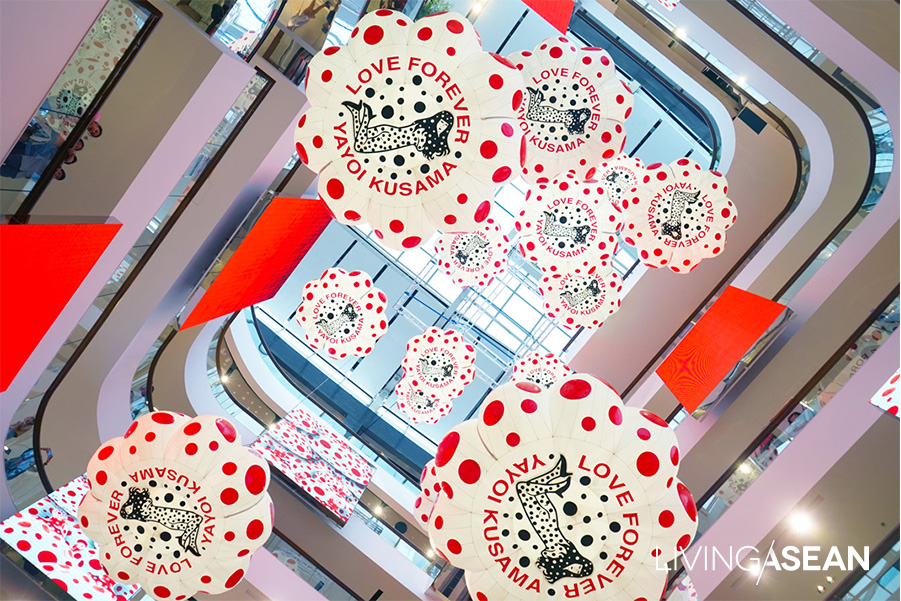
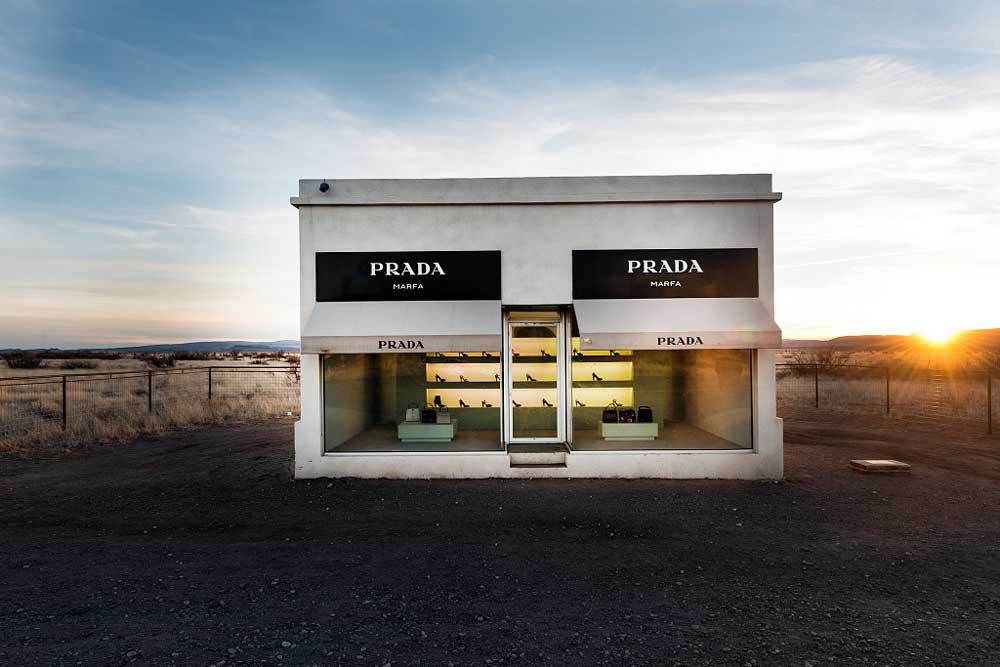

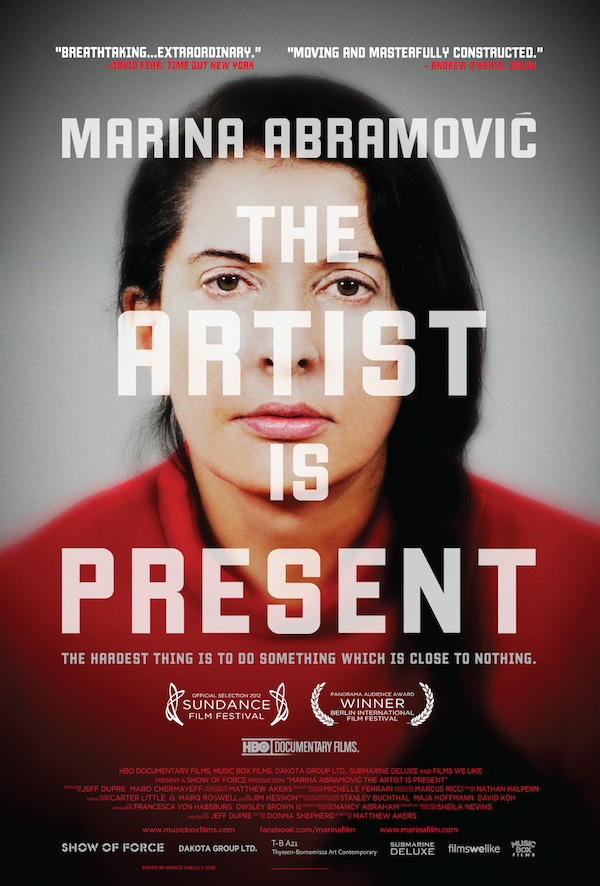
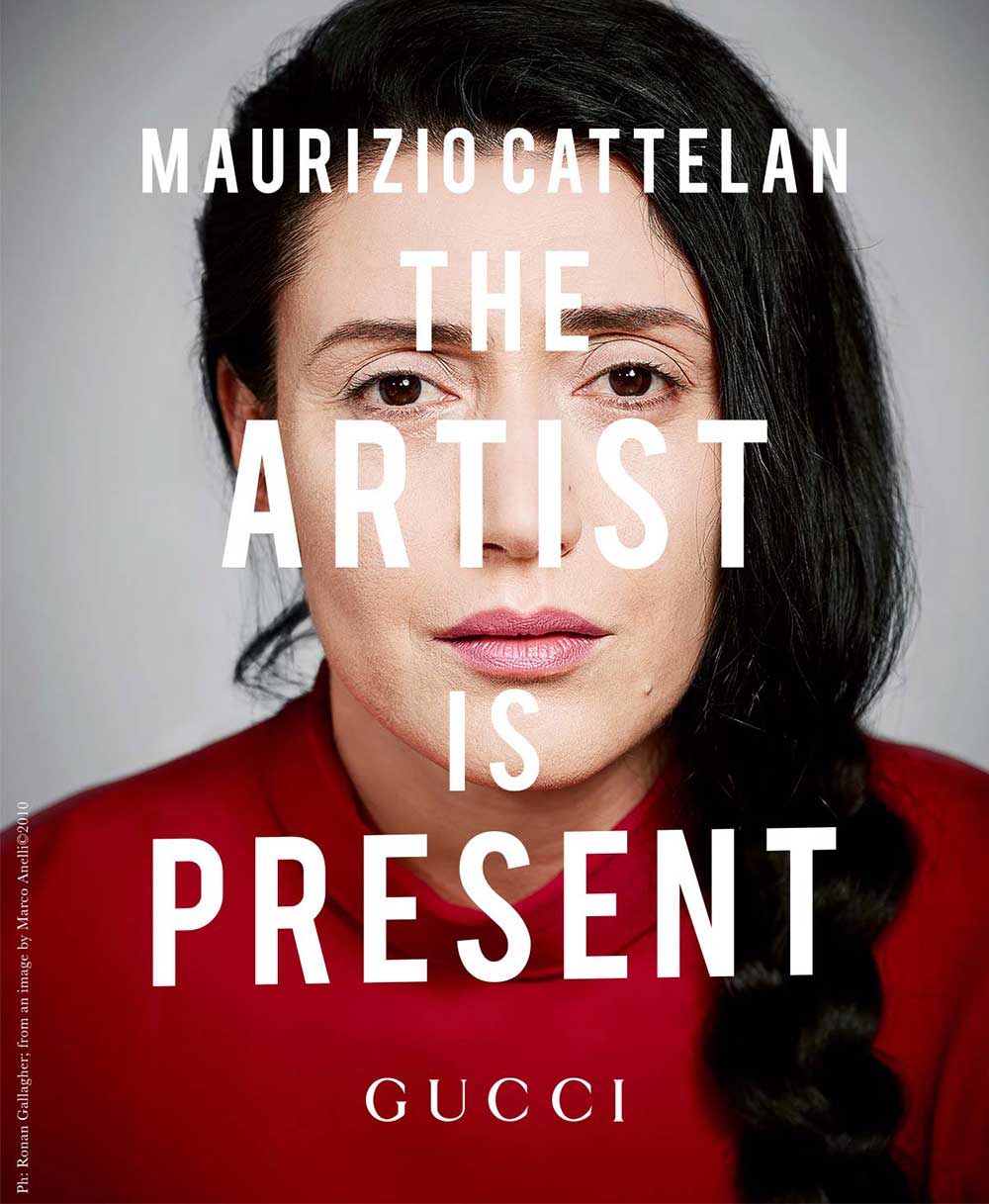


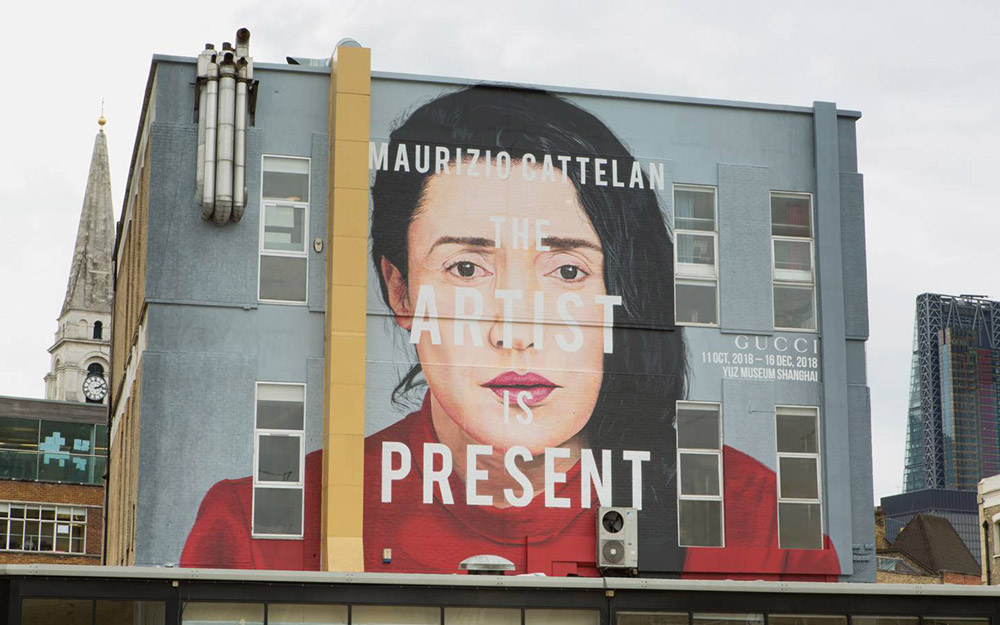

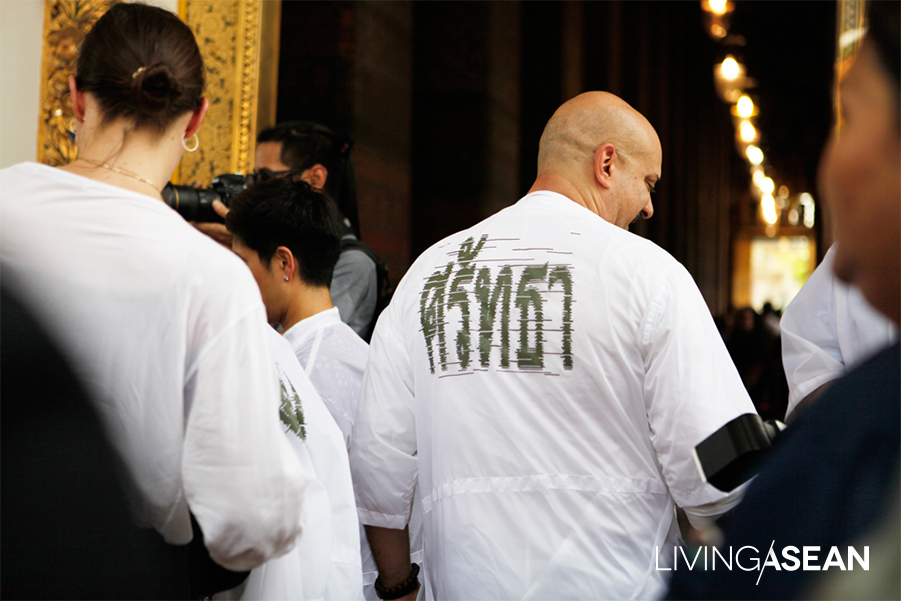

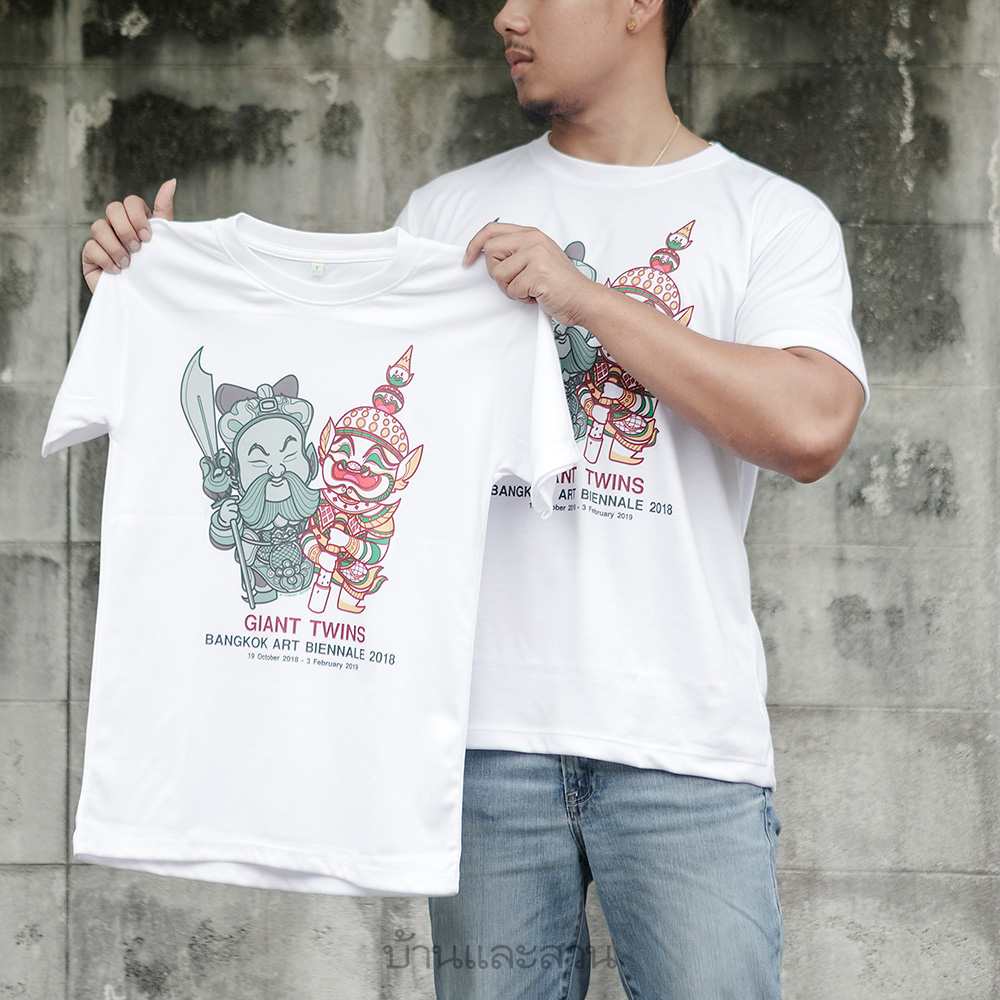
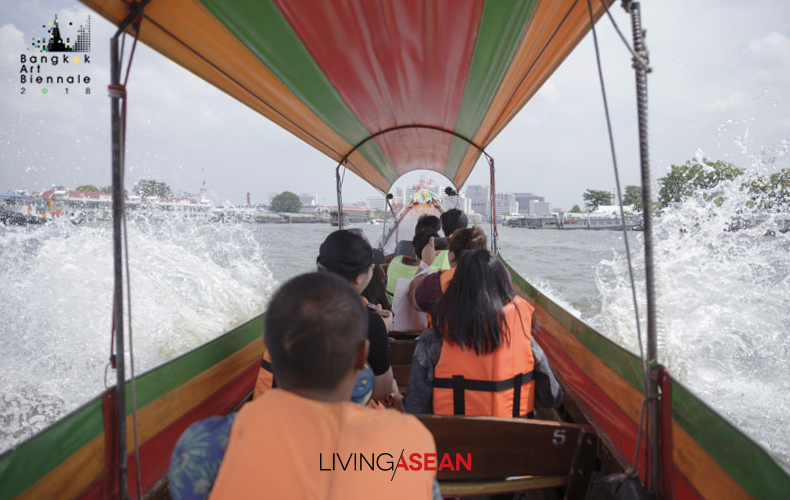
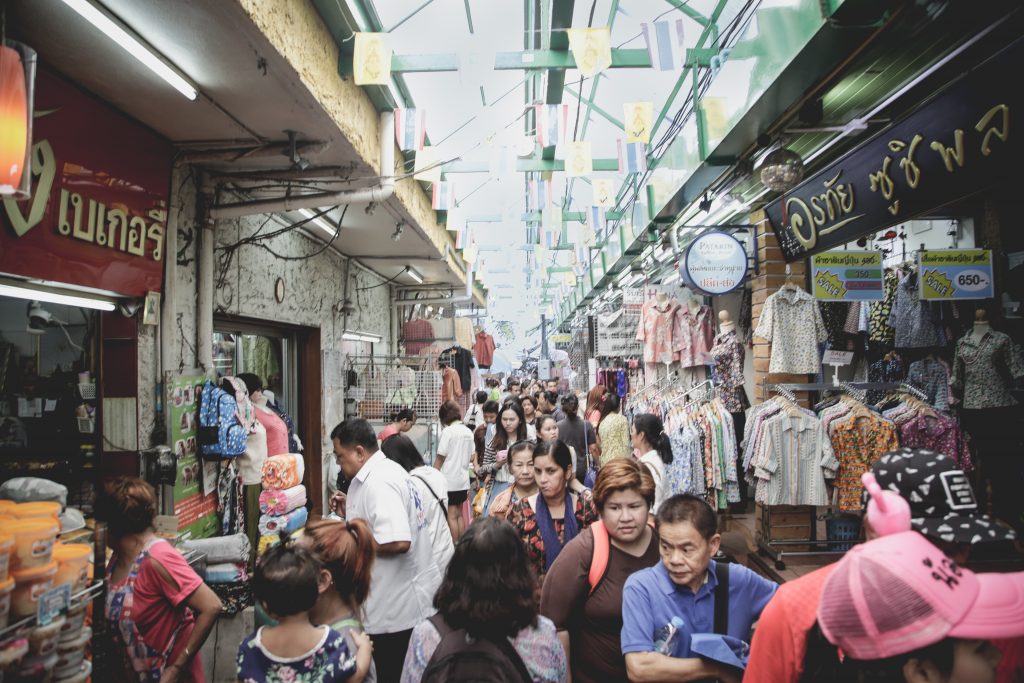

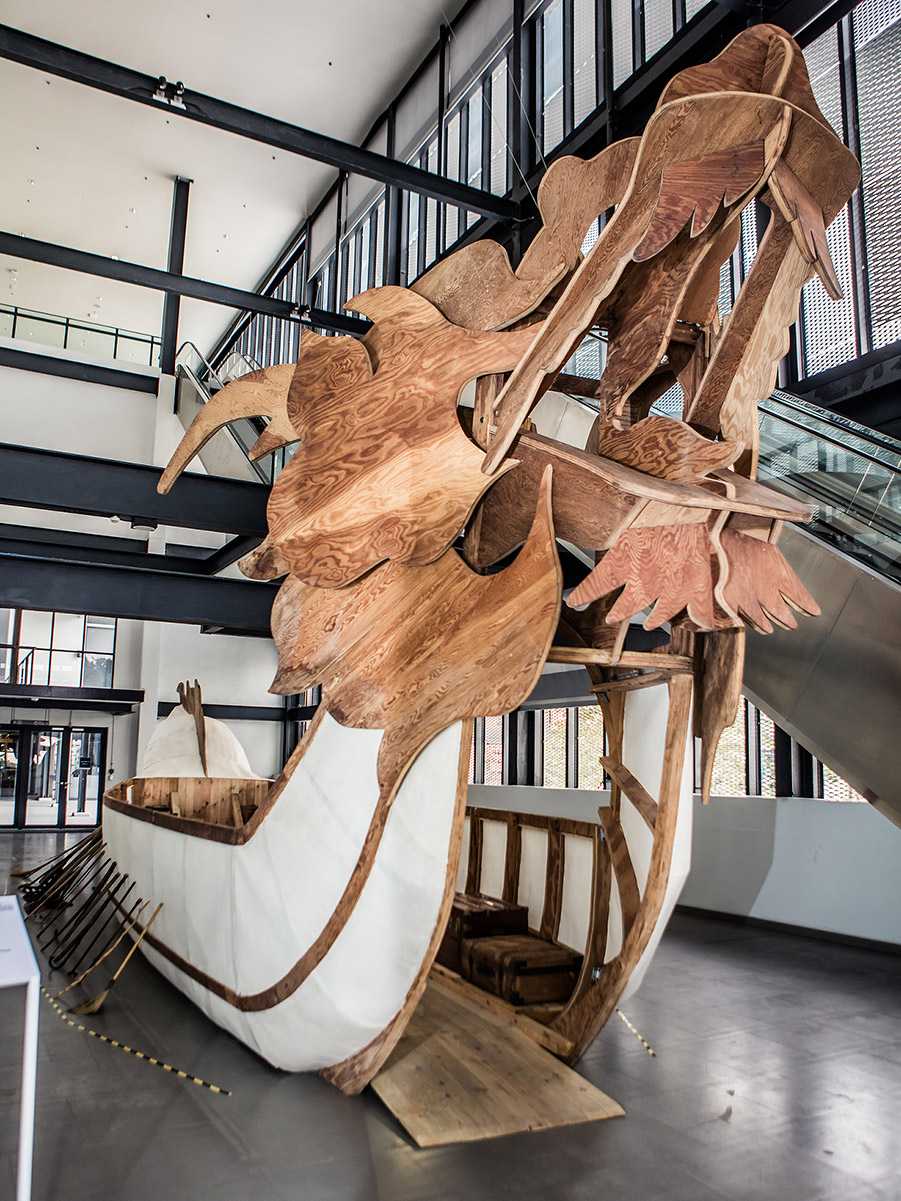
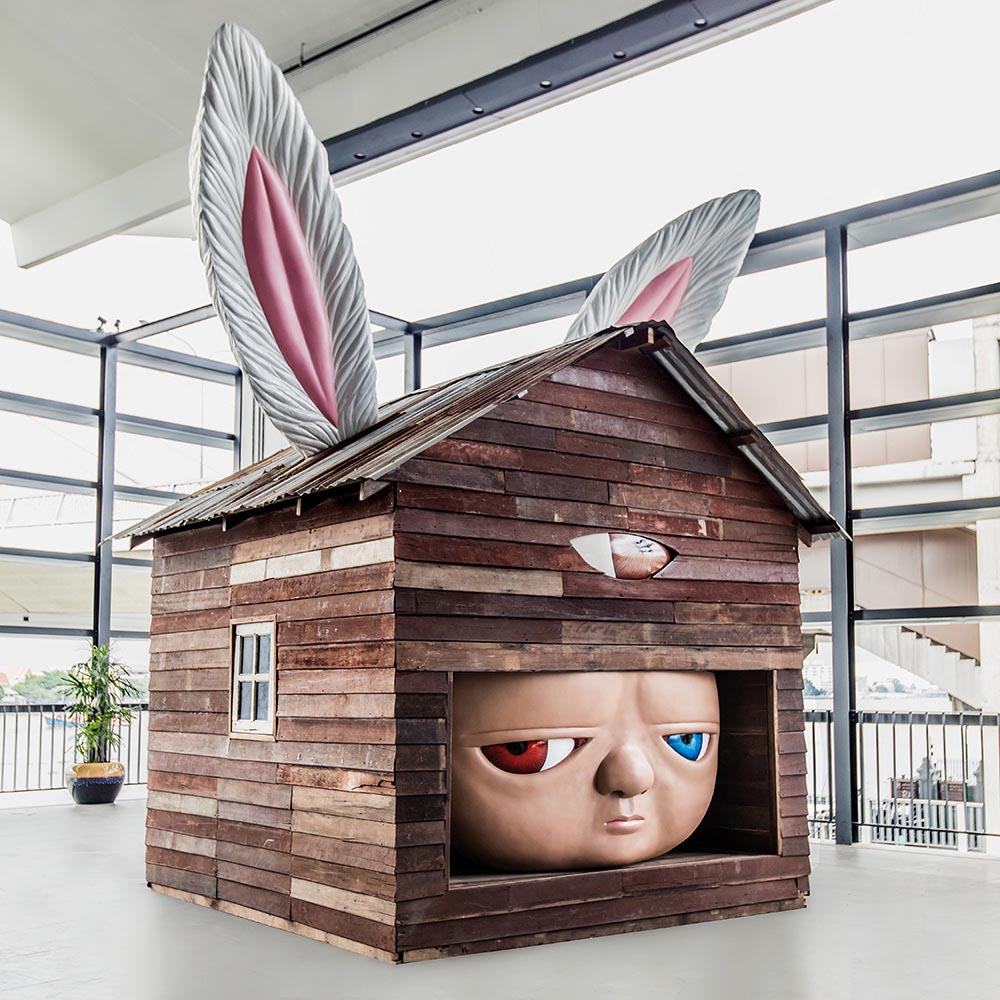
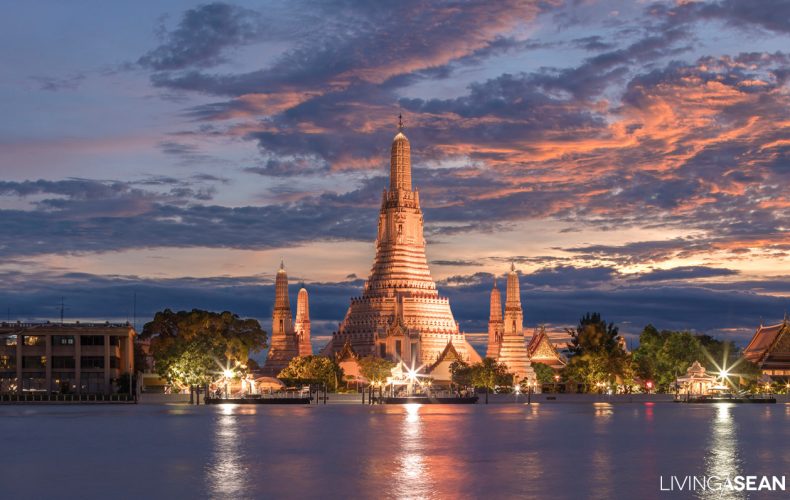

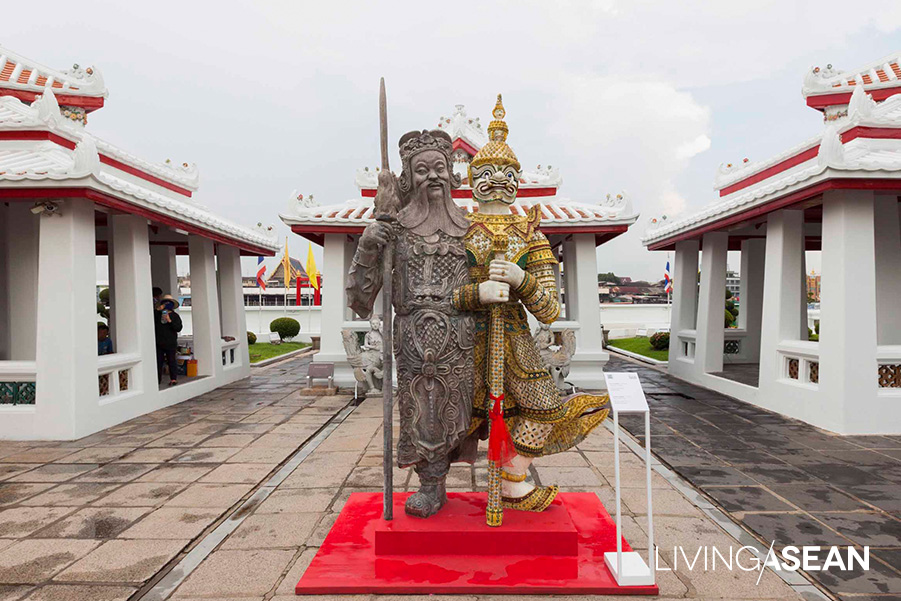
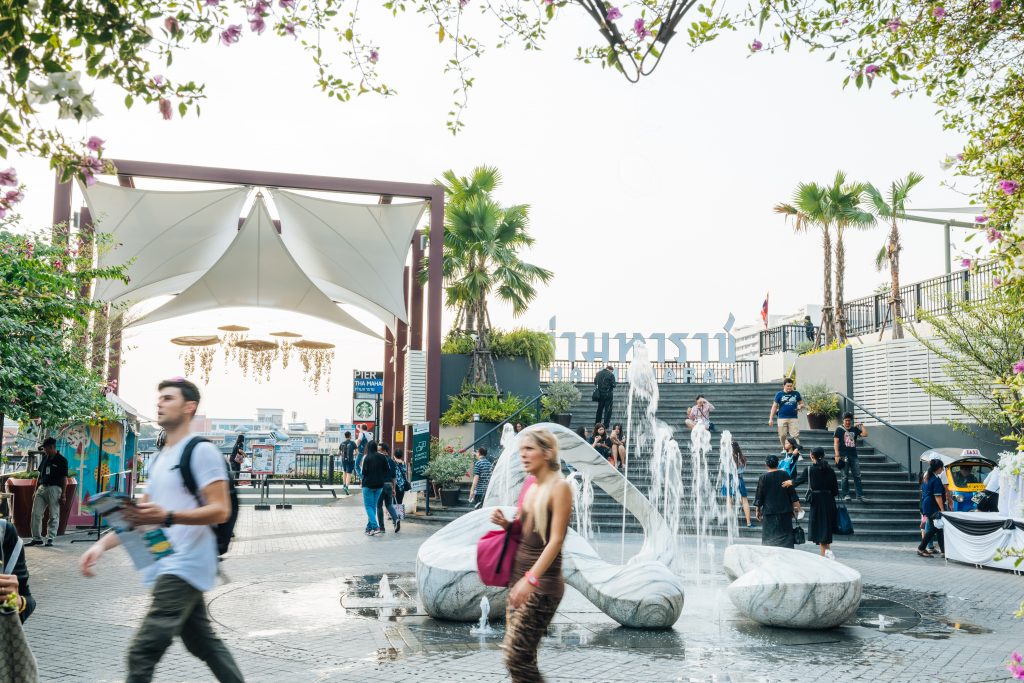
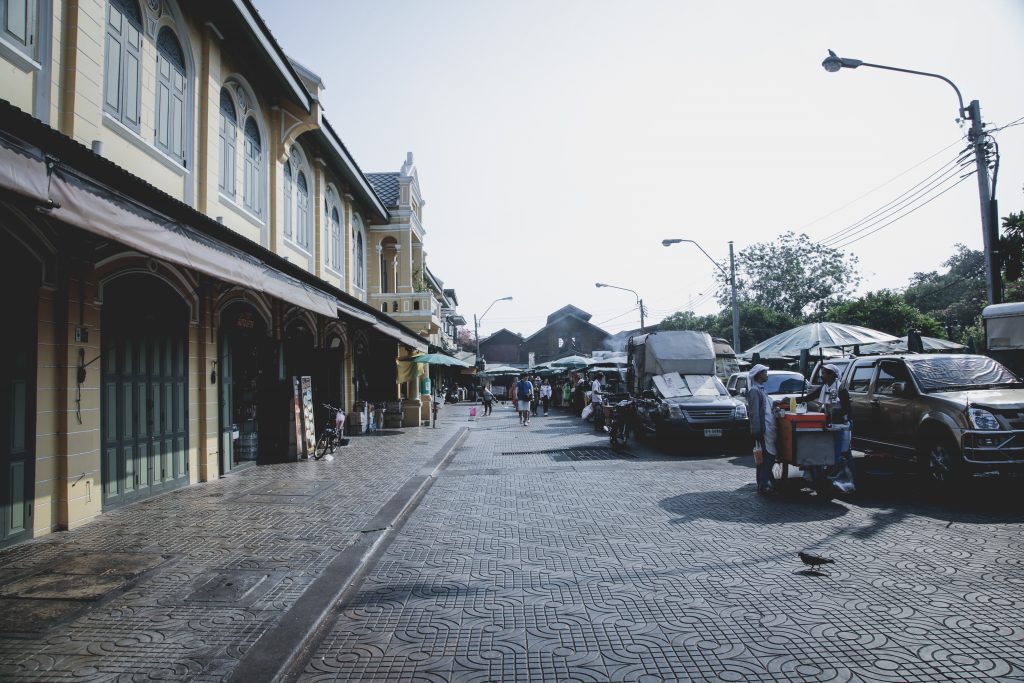

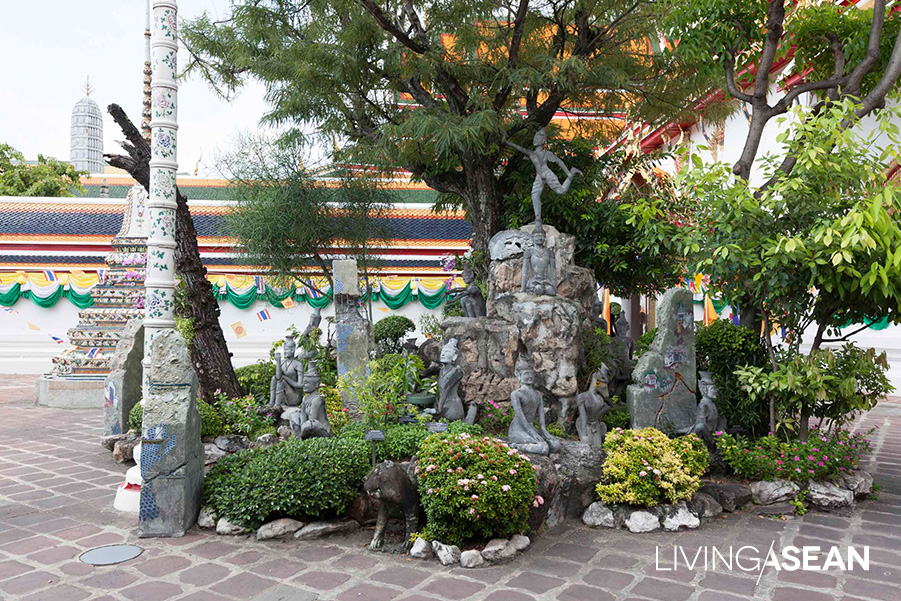
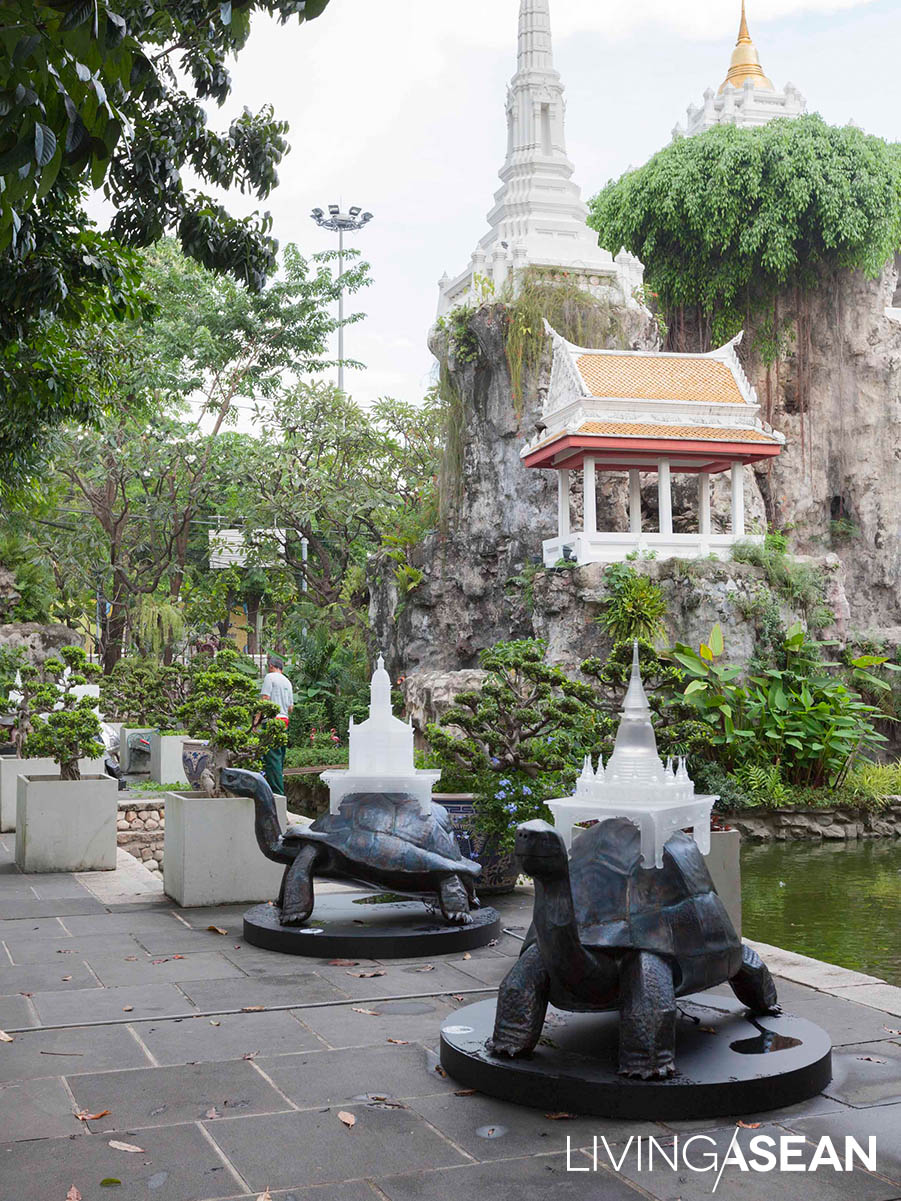
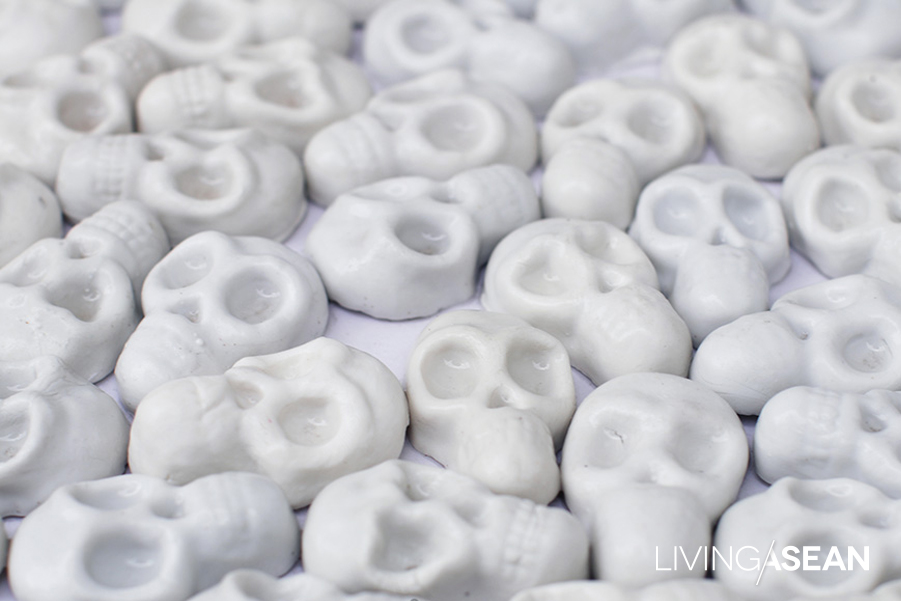
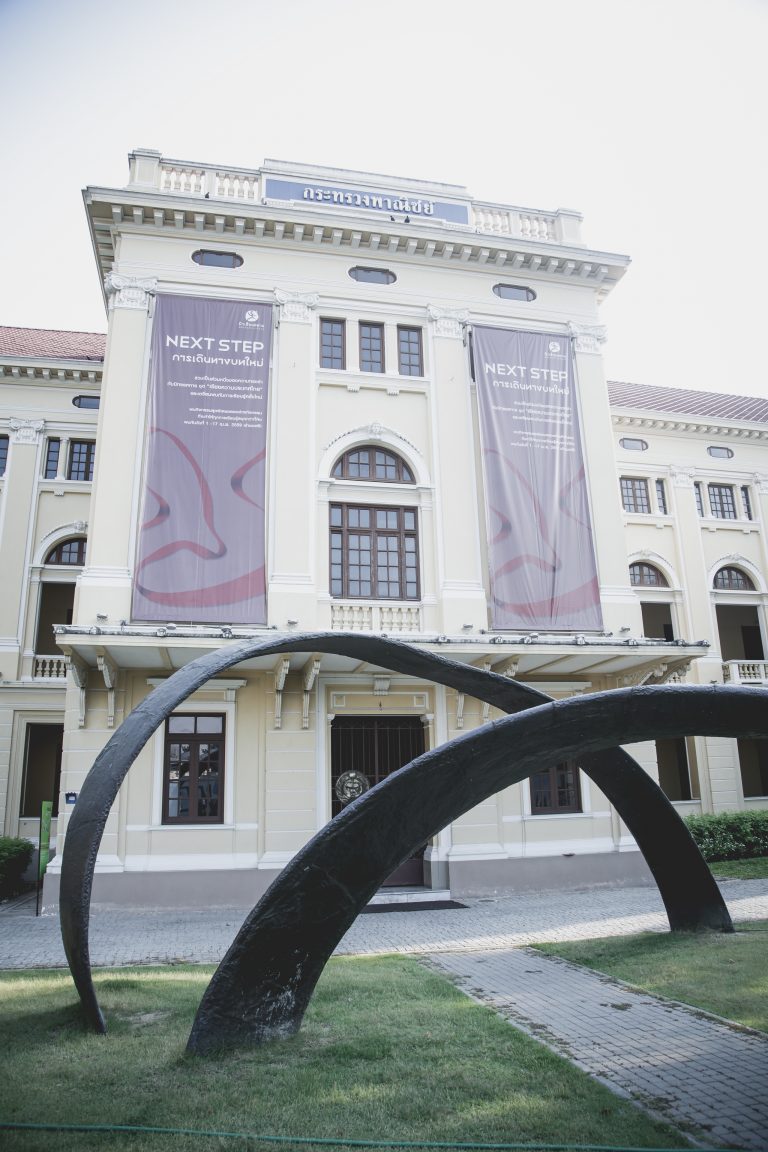
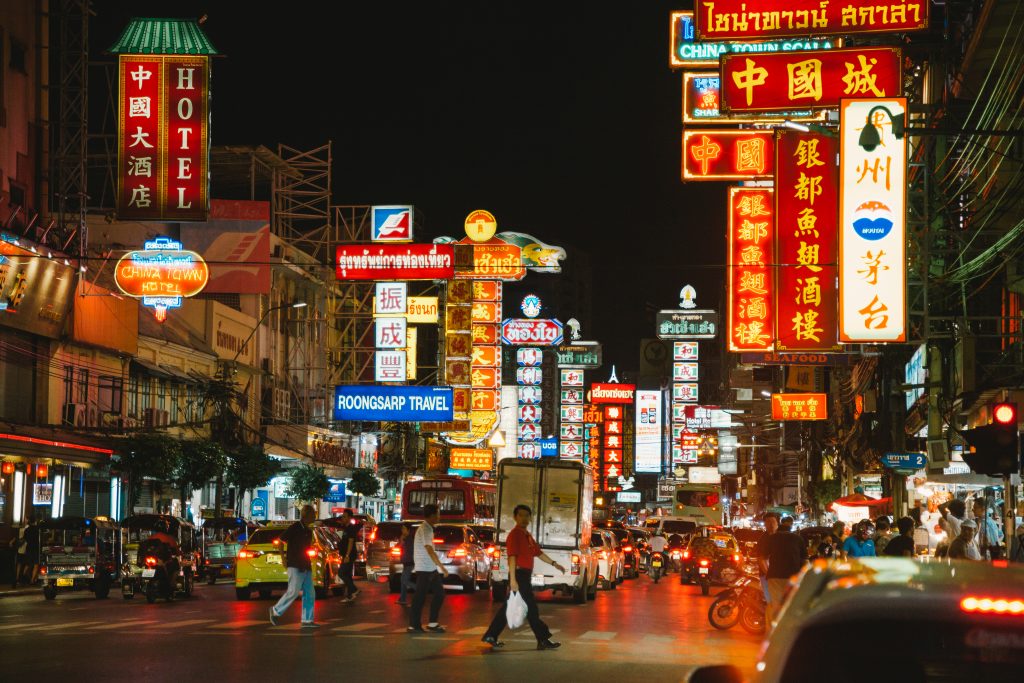
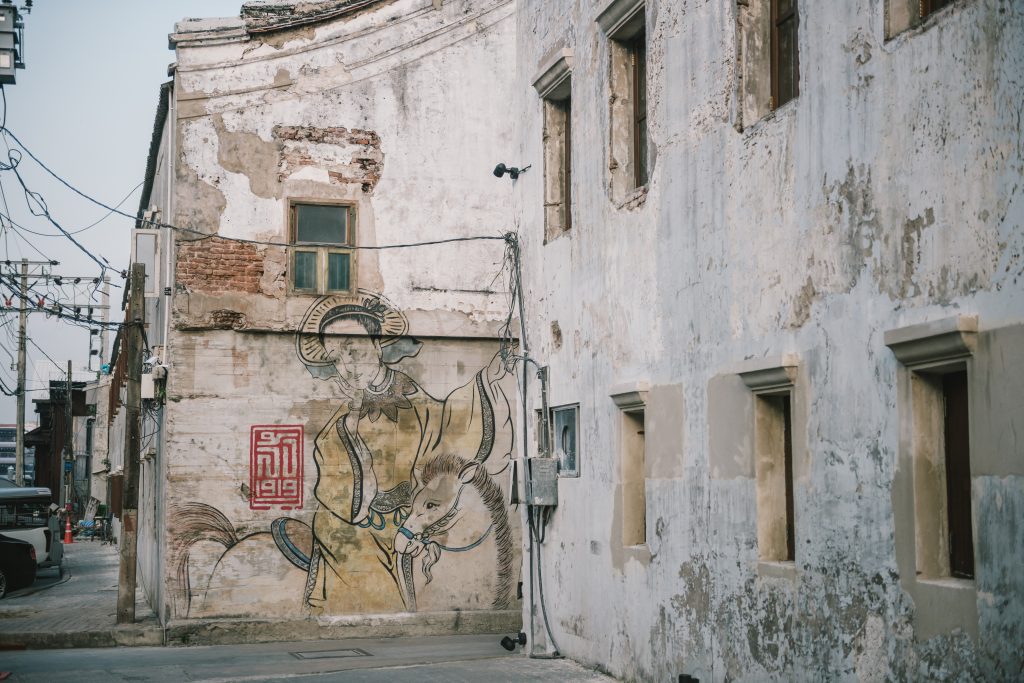
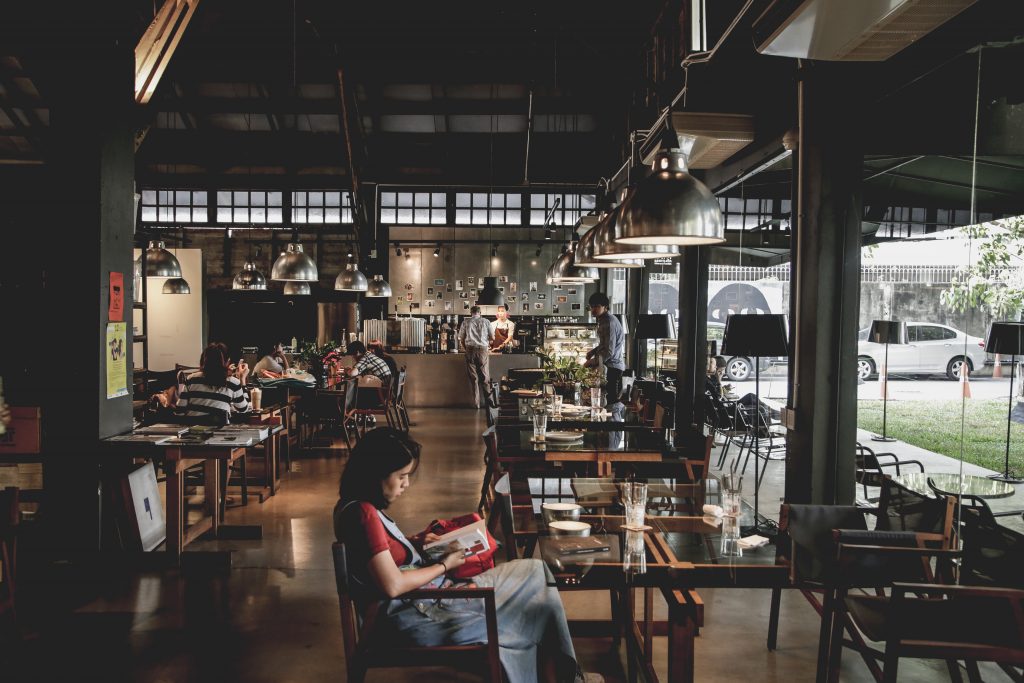
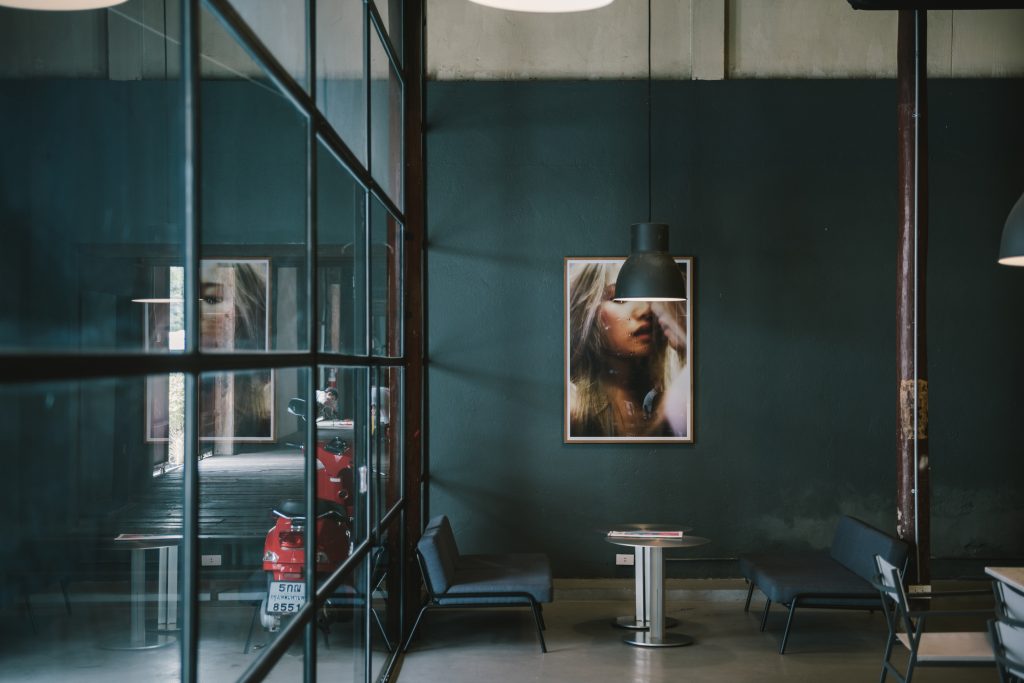

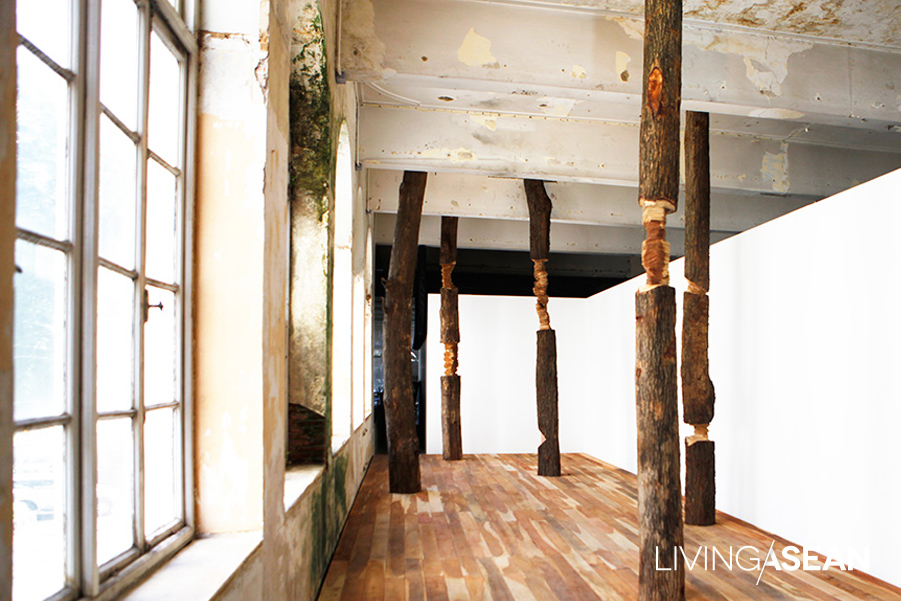

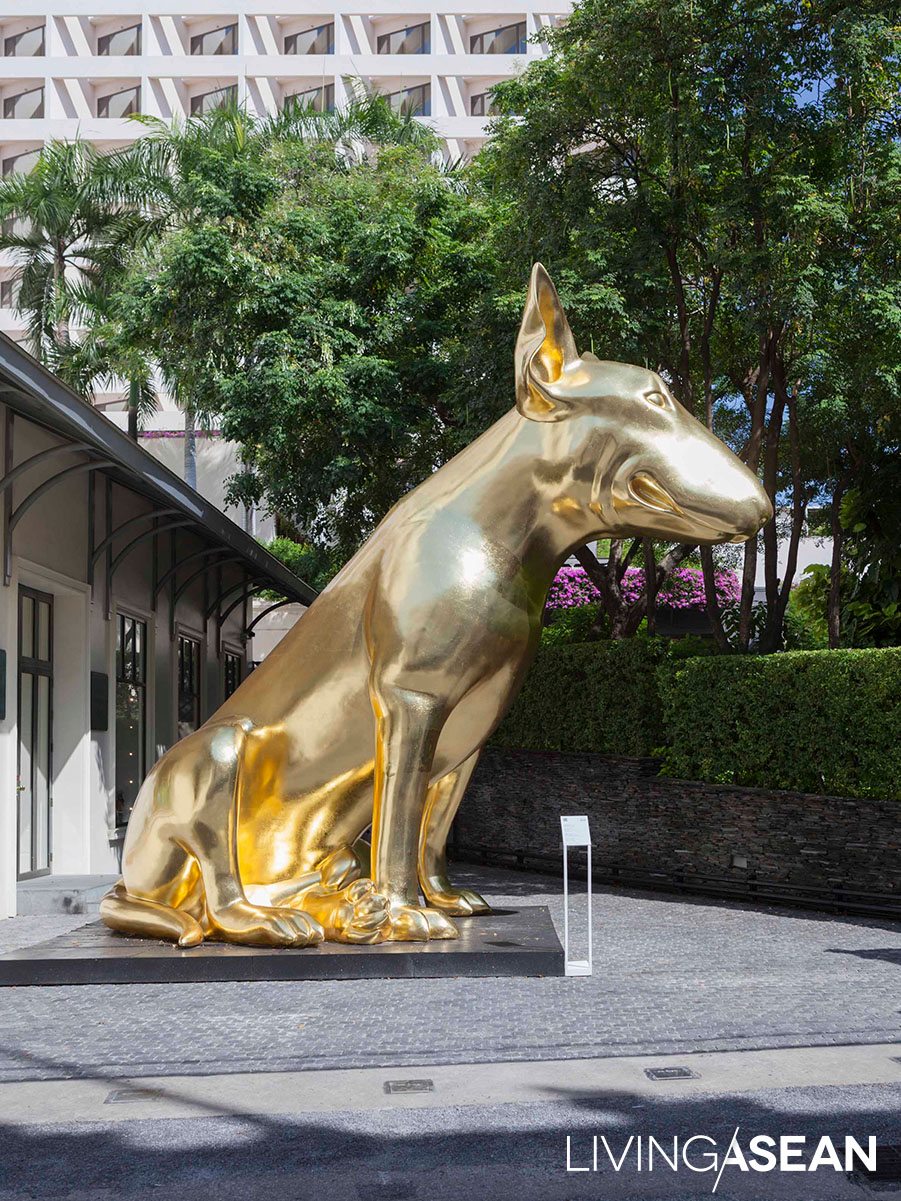
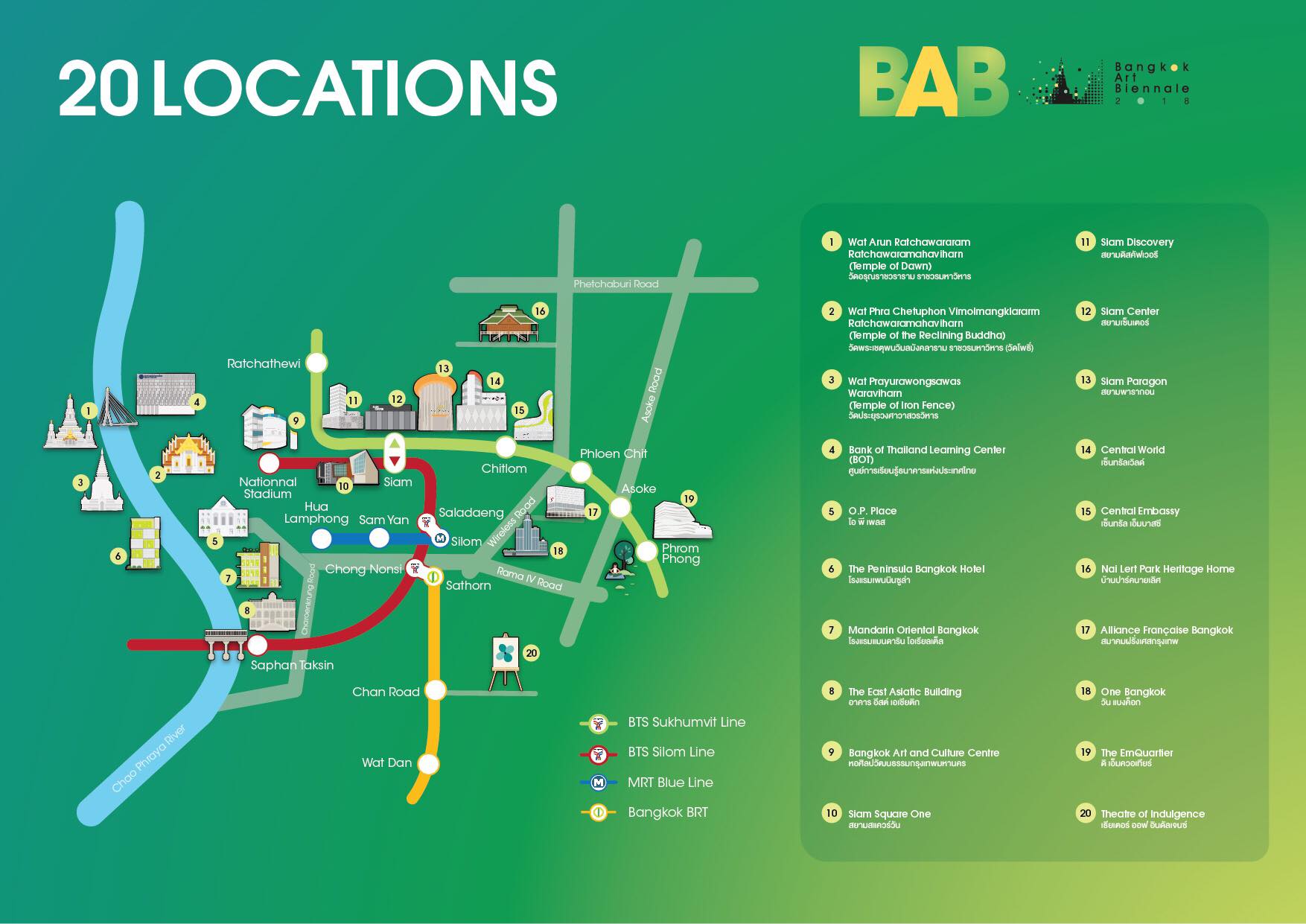

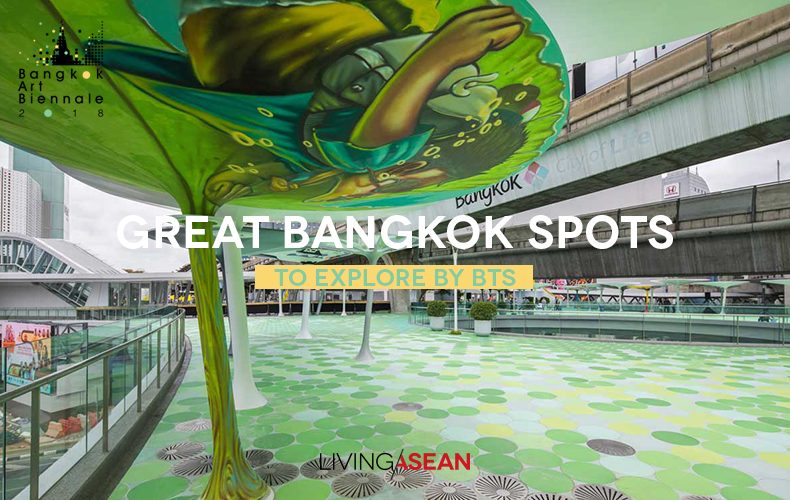
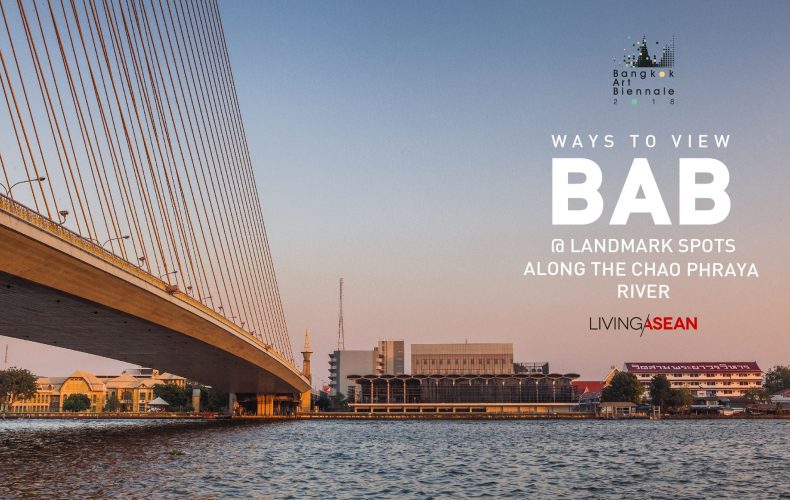

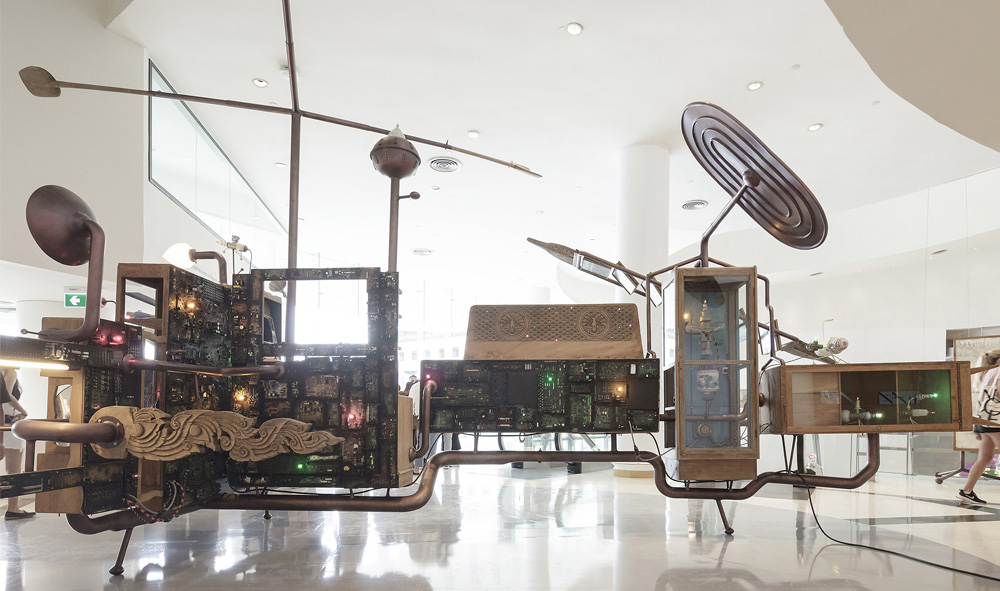

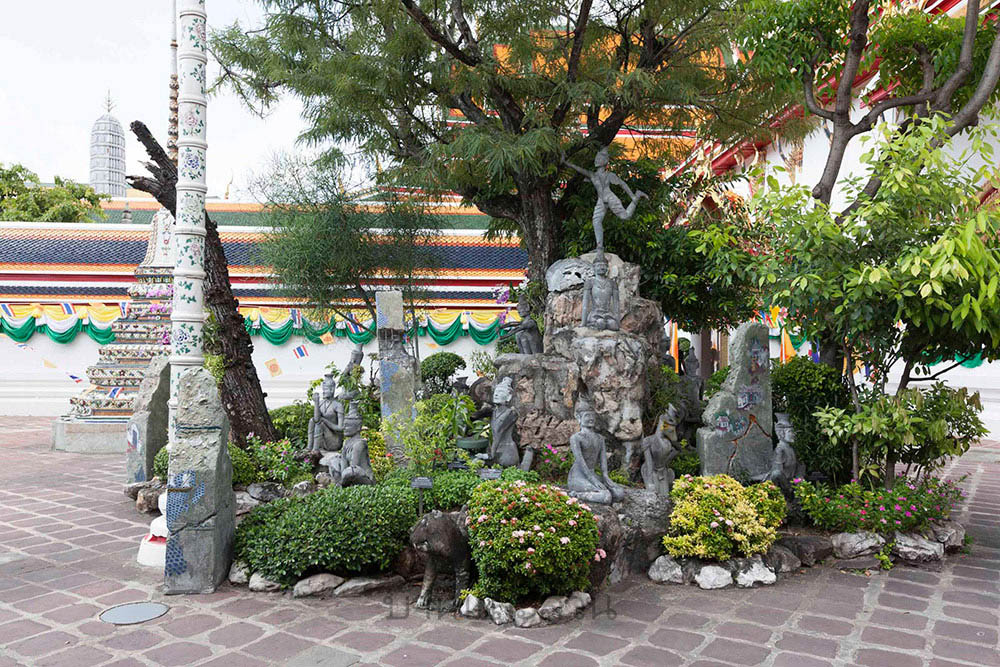
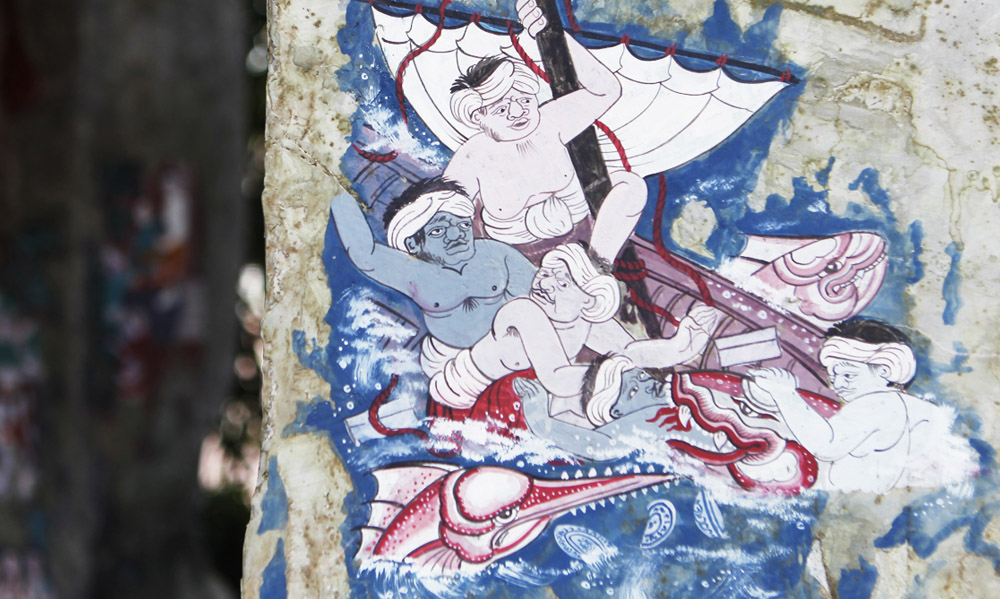



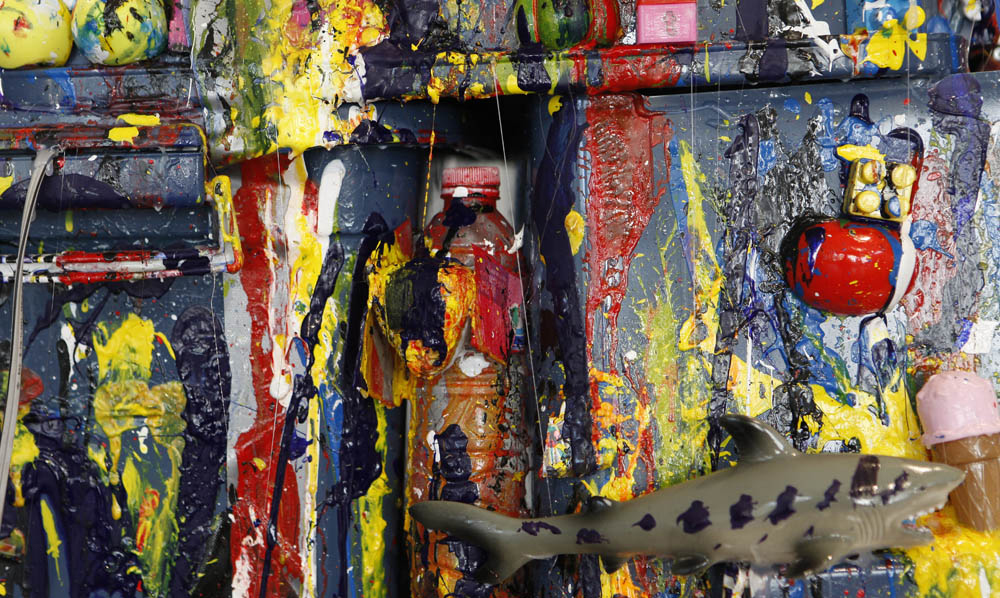
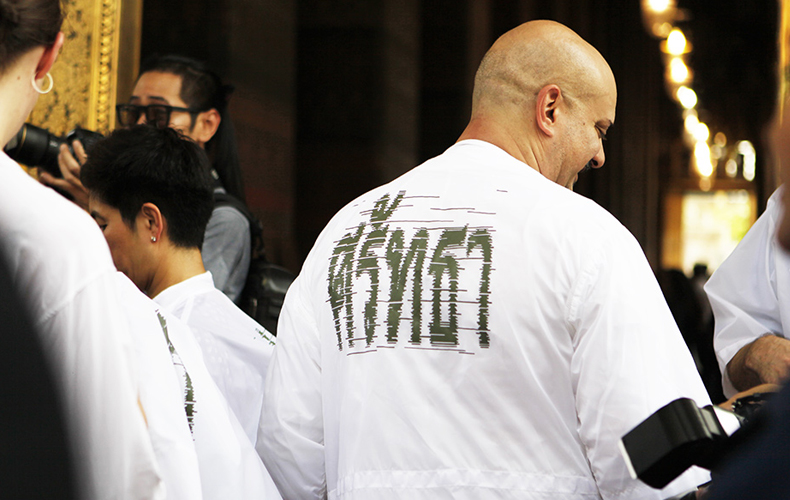
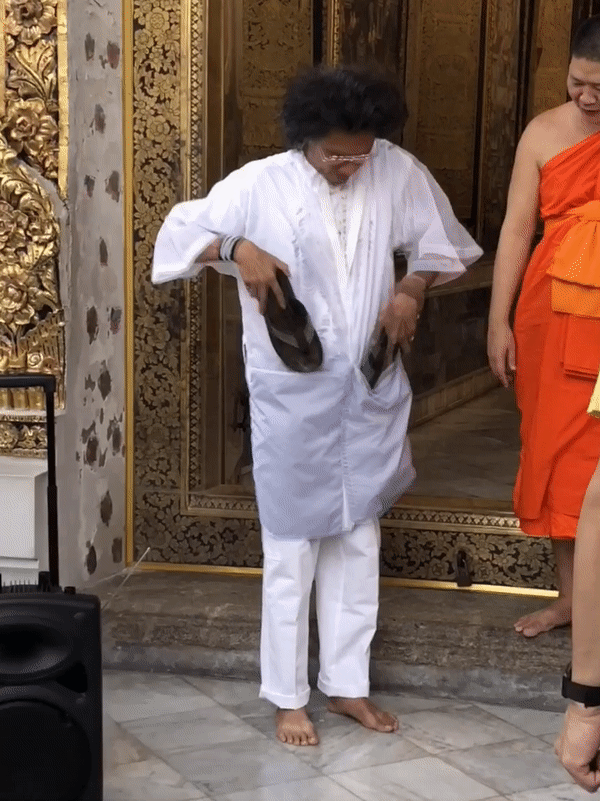
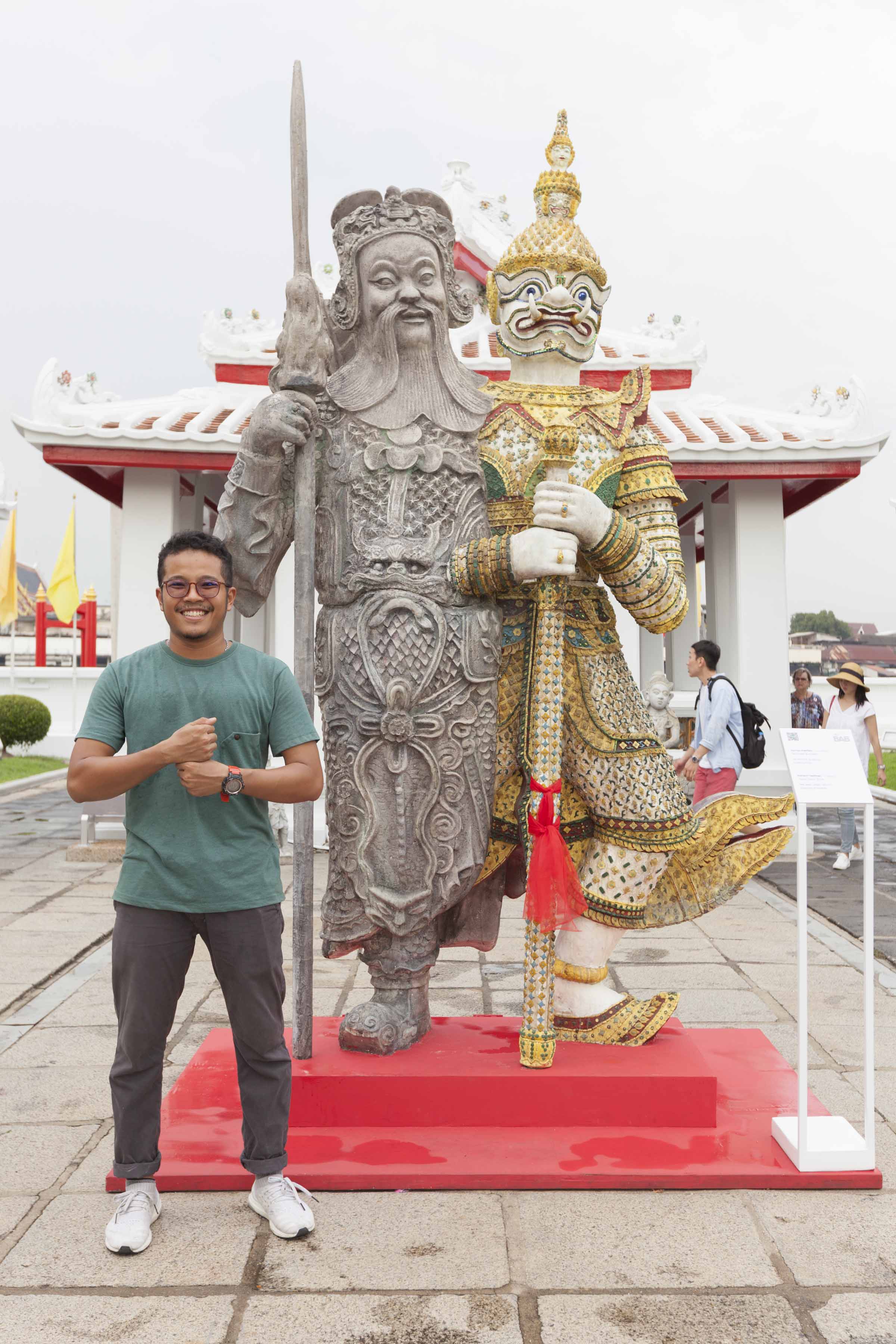
 Giant Twins by Komkrit Tepthian, Bangkok Art Biennale 2018 | Photo courtesy of Media Hub
Giant Twins by Komkrit Tepthian, Bangkok Art Biennale 2018 | Photo courtesy of Media Hub


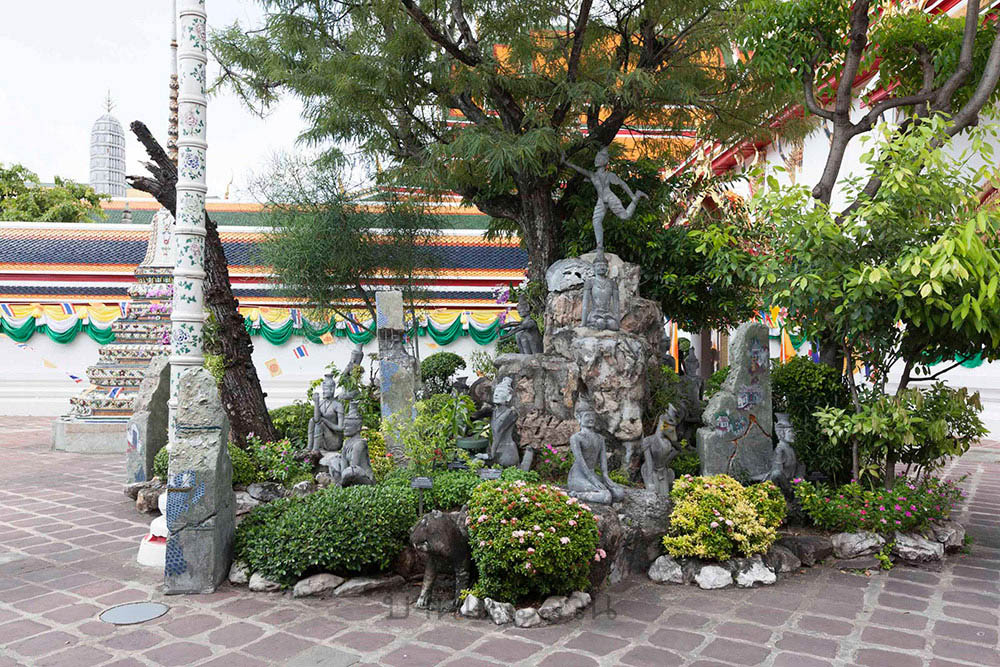
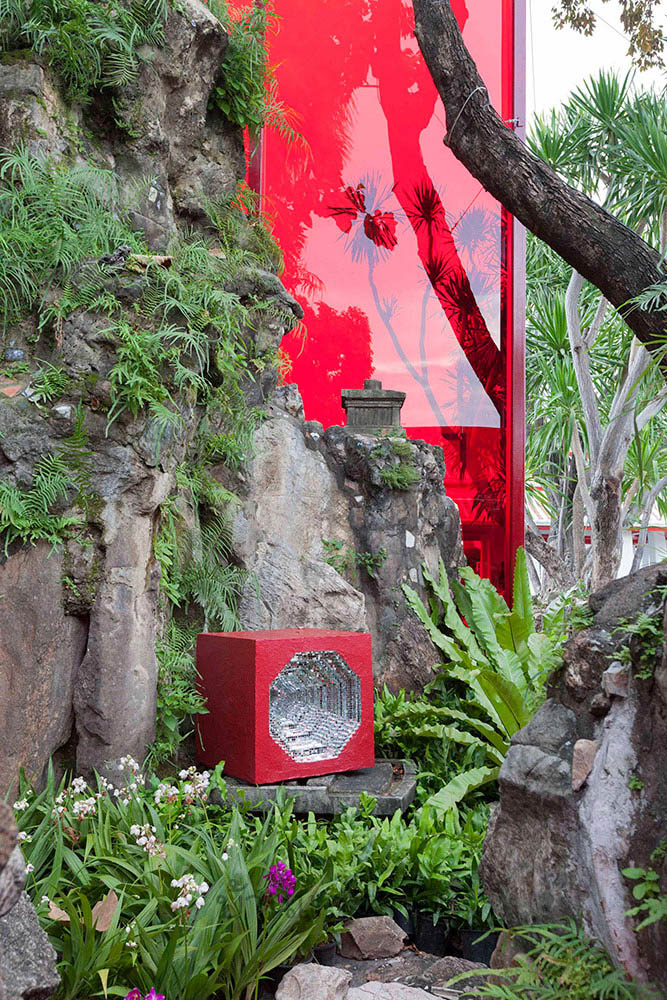
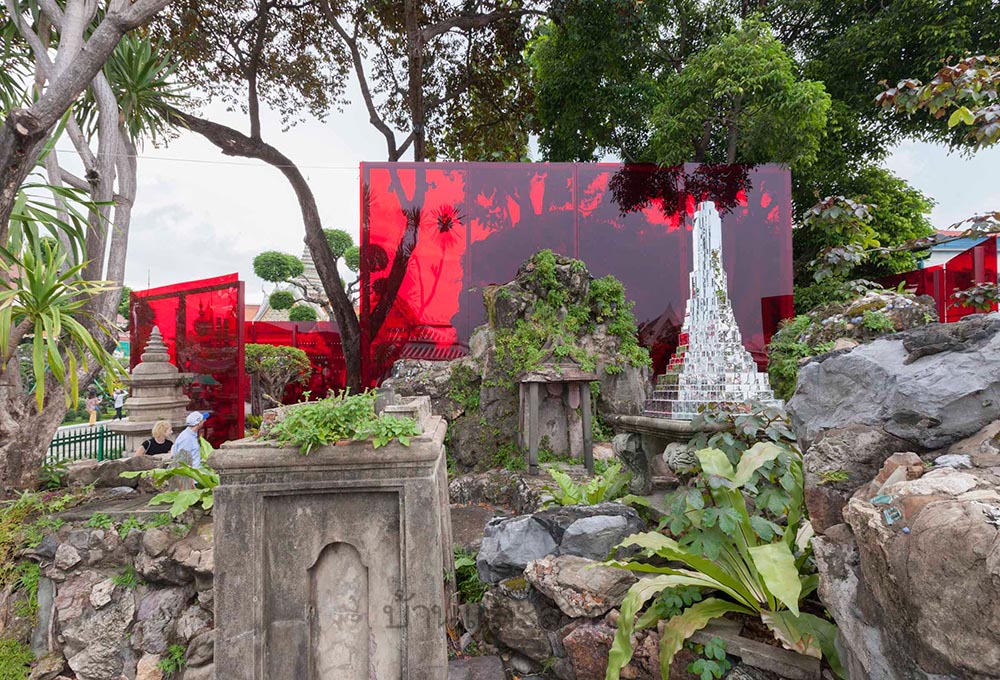


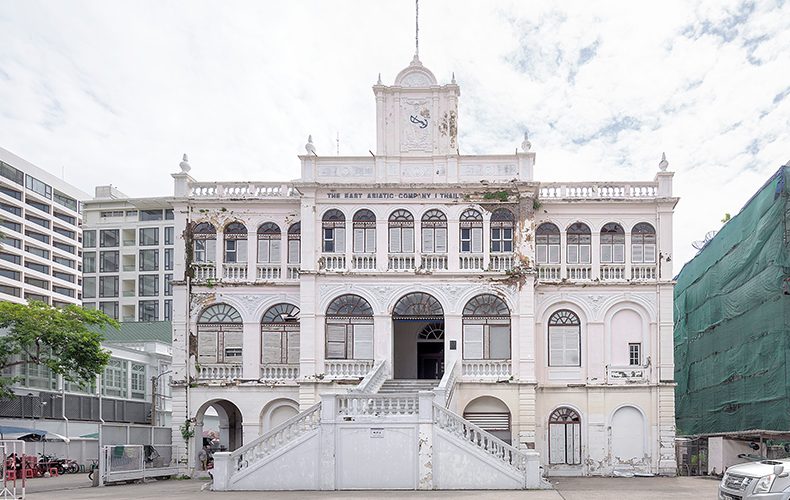
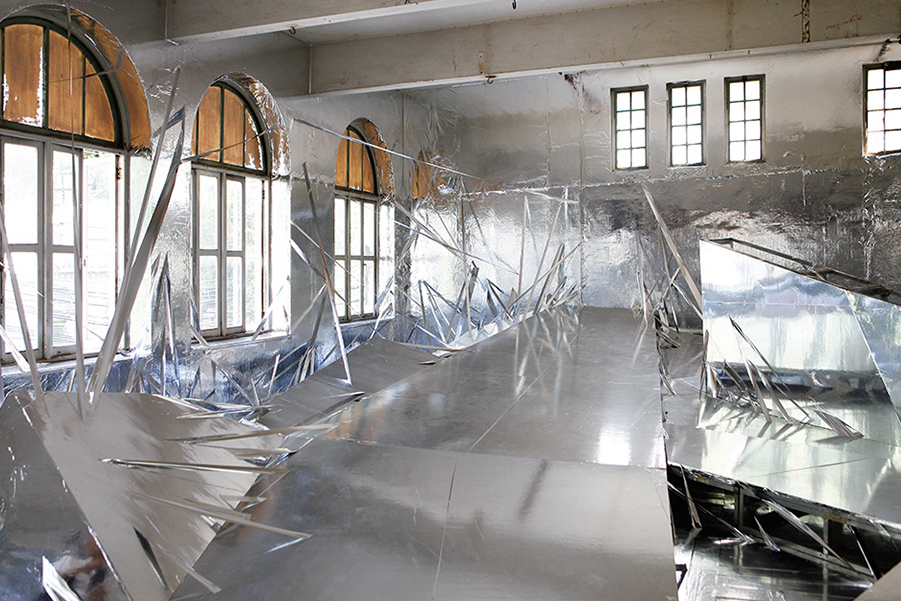
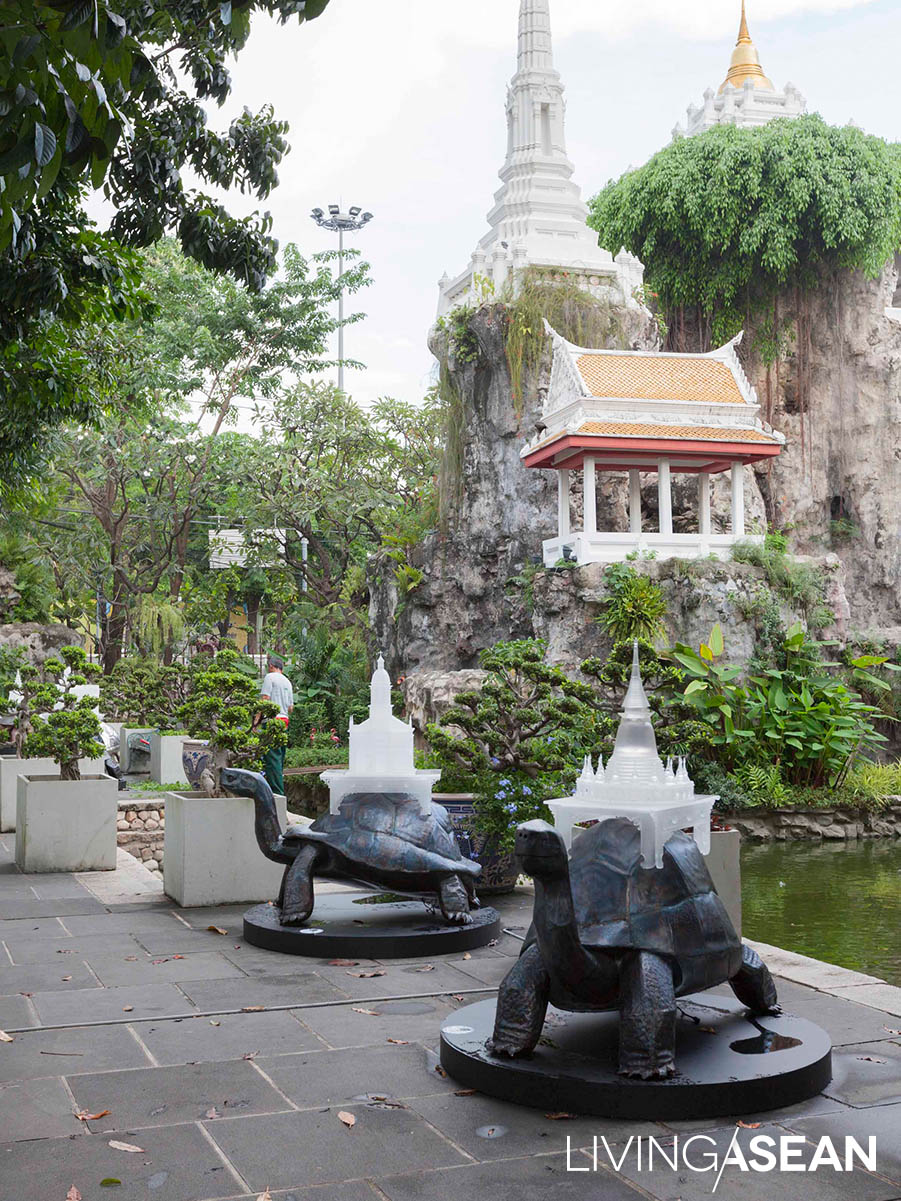

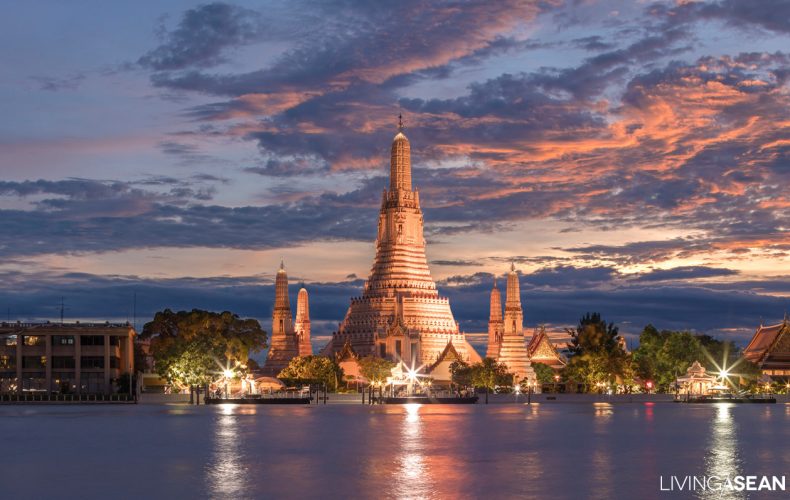




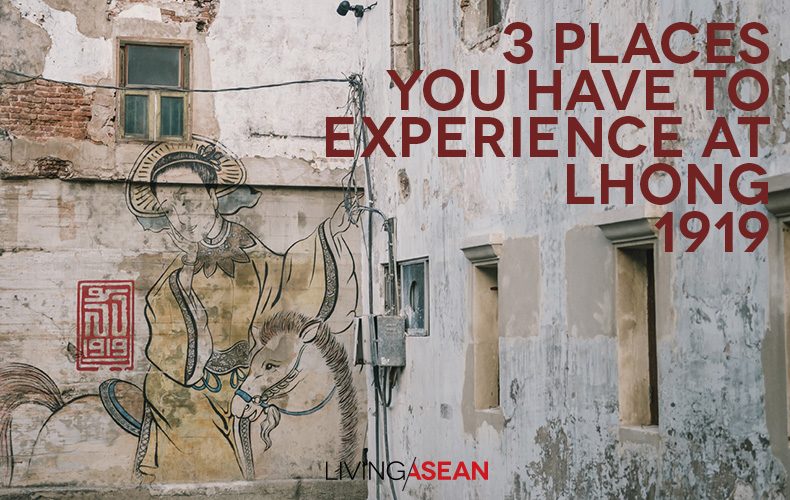

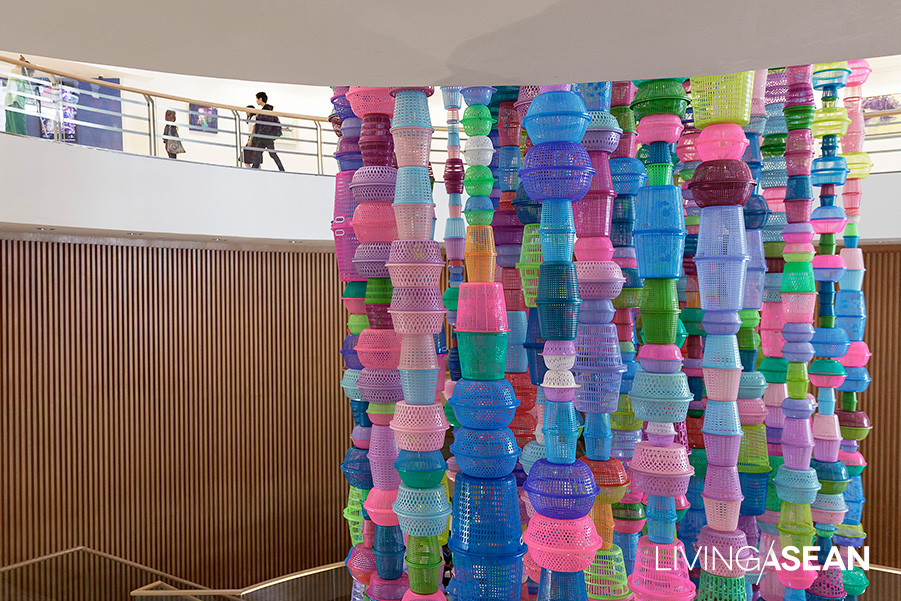
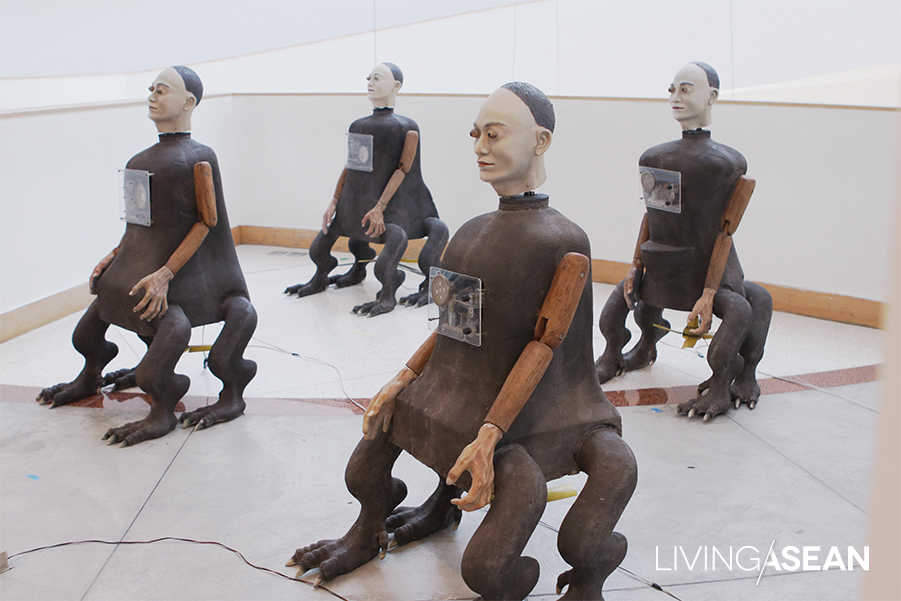
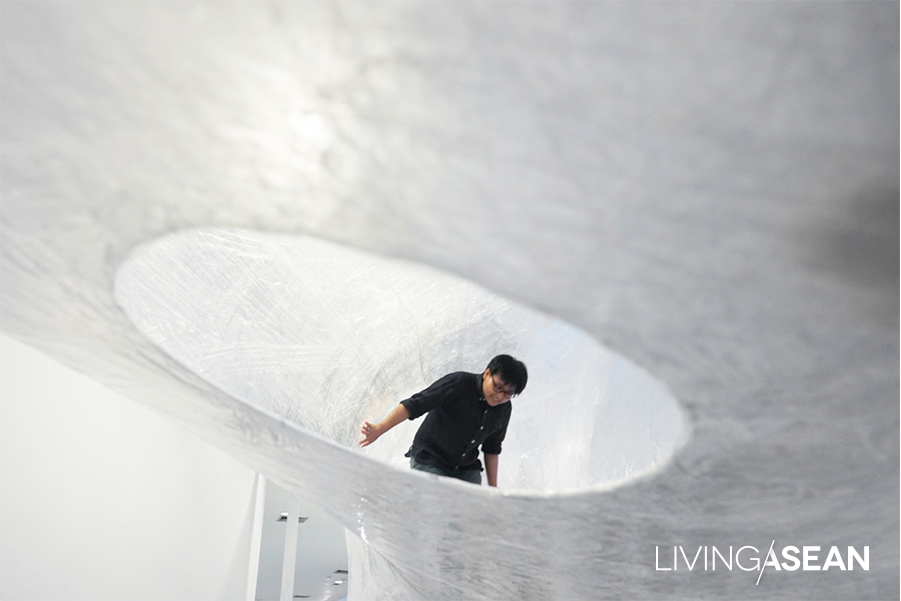
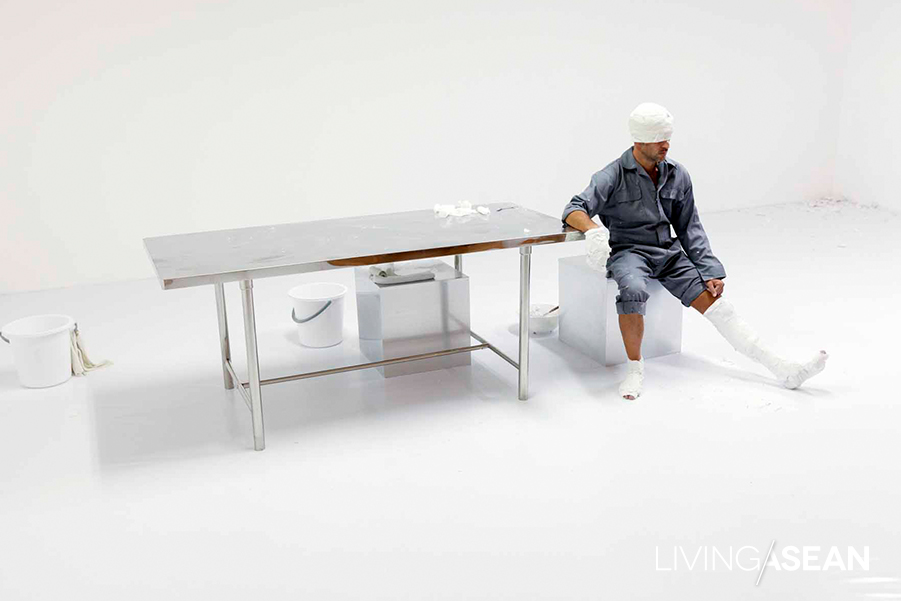

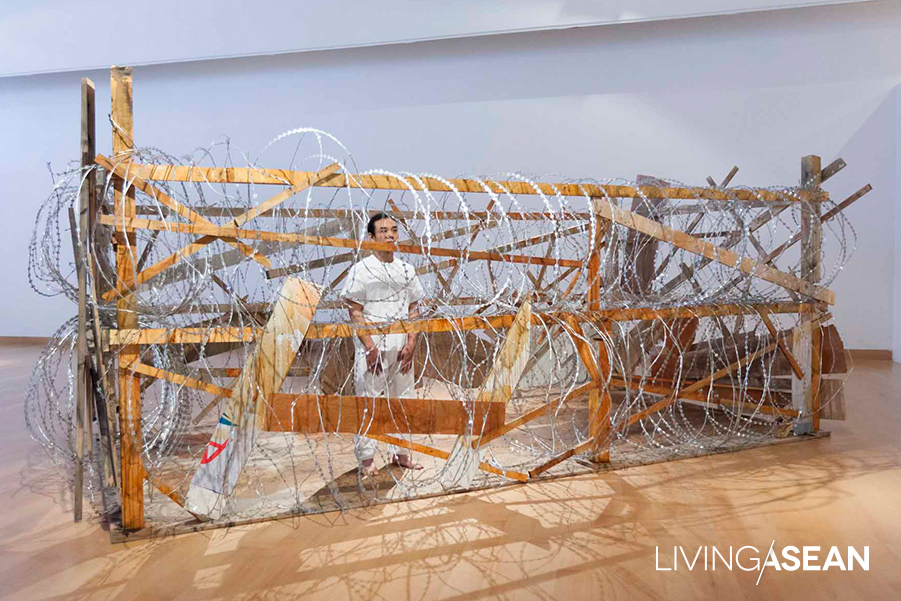
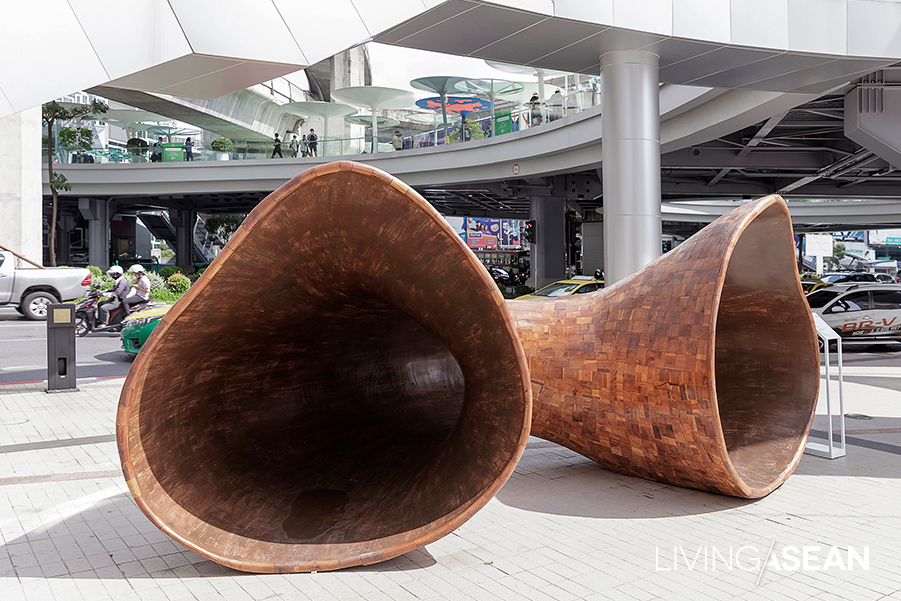


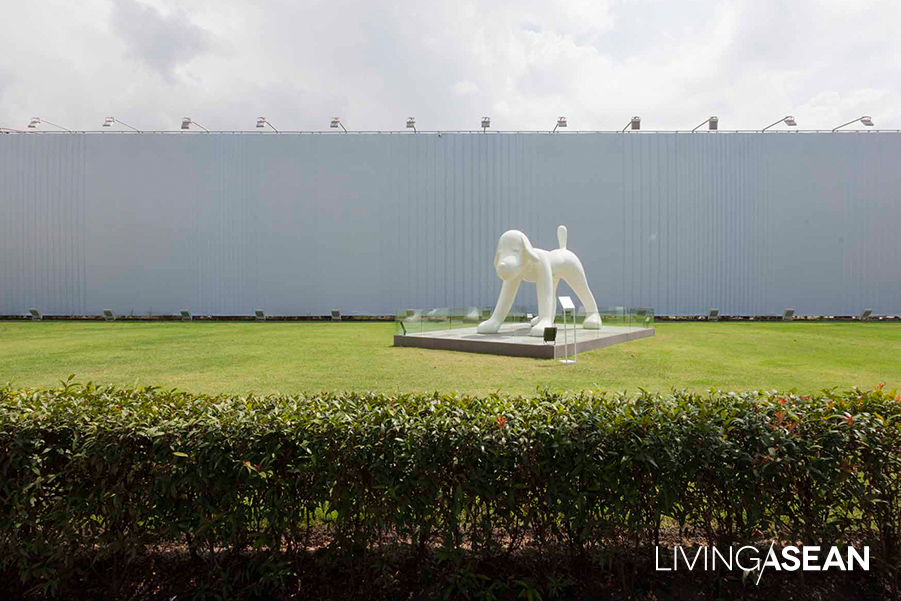
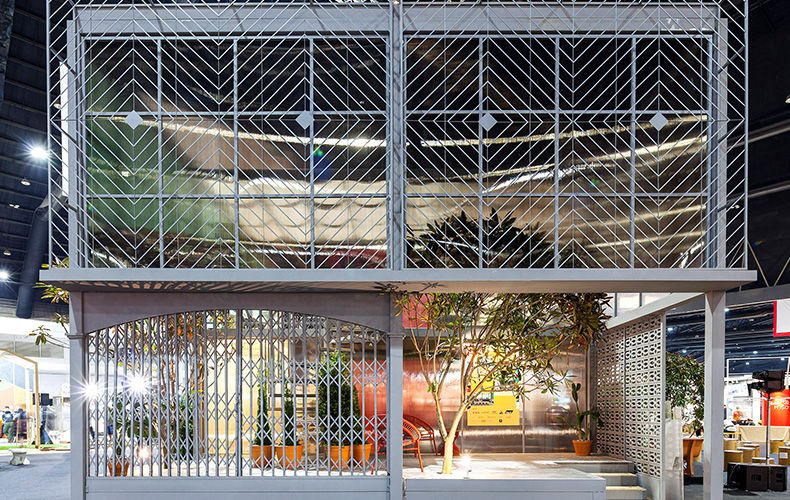


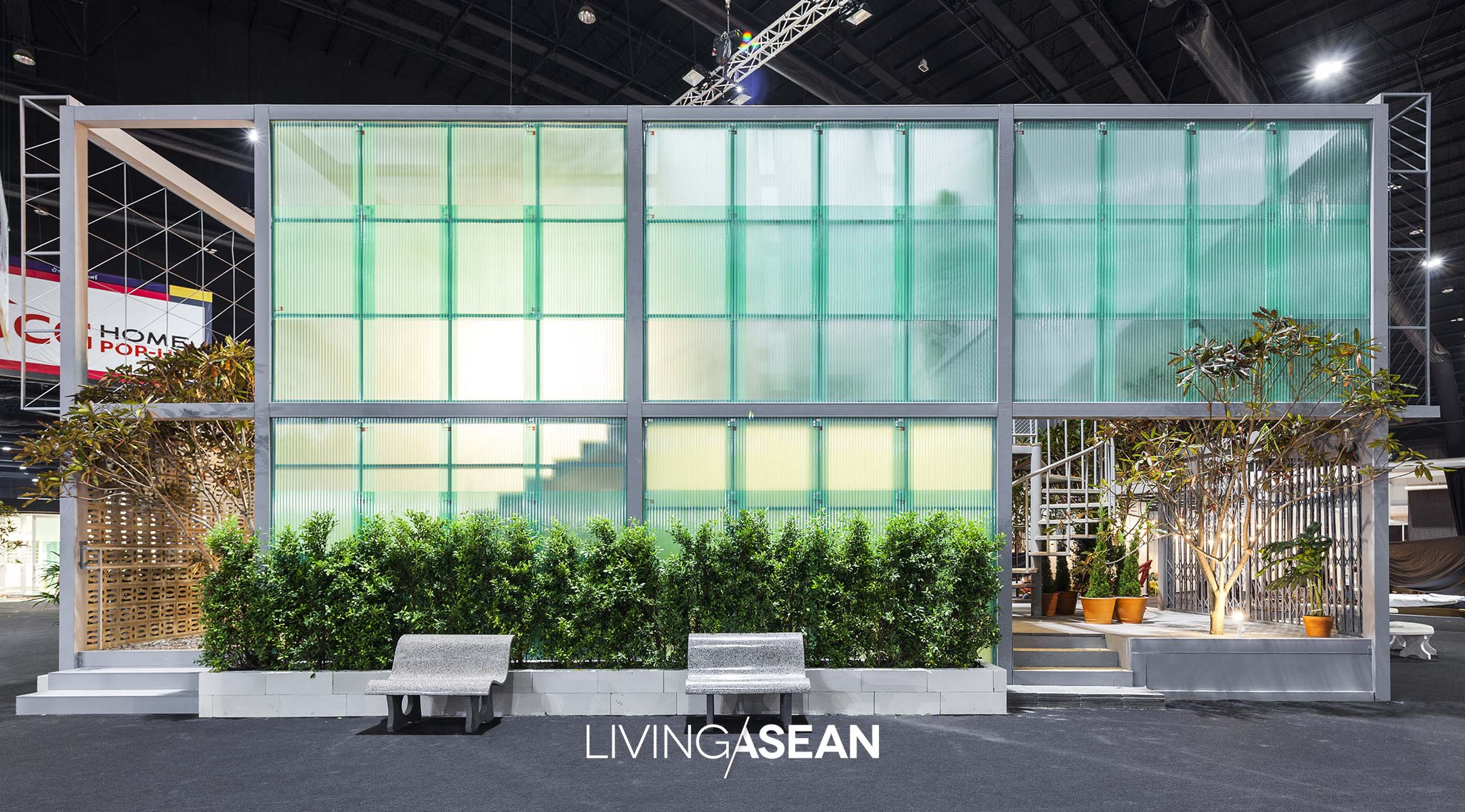
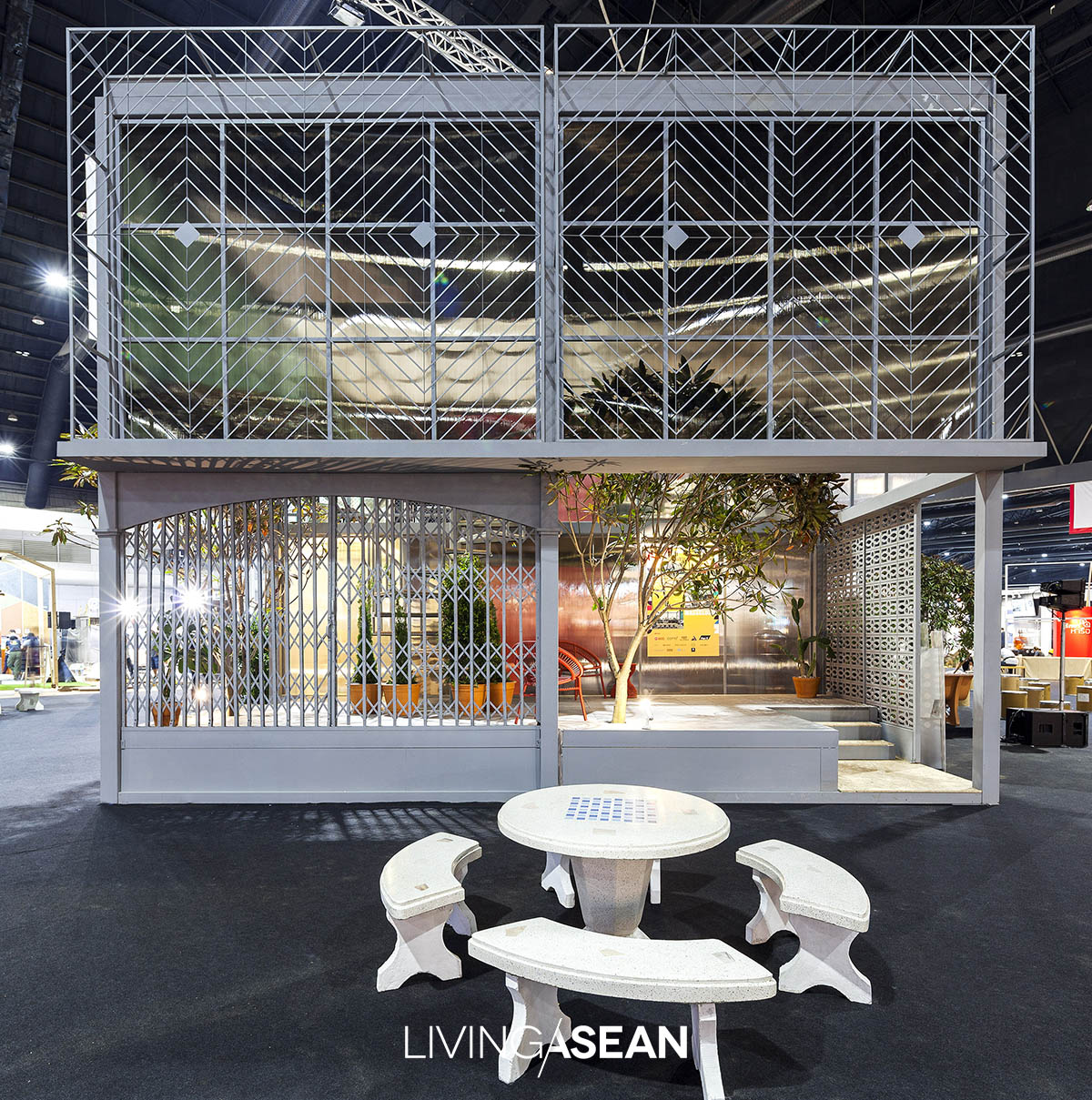
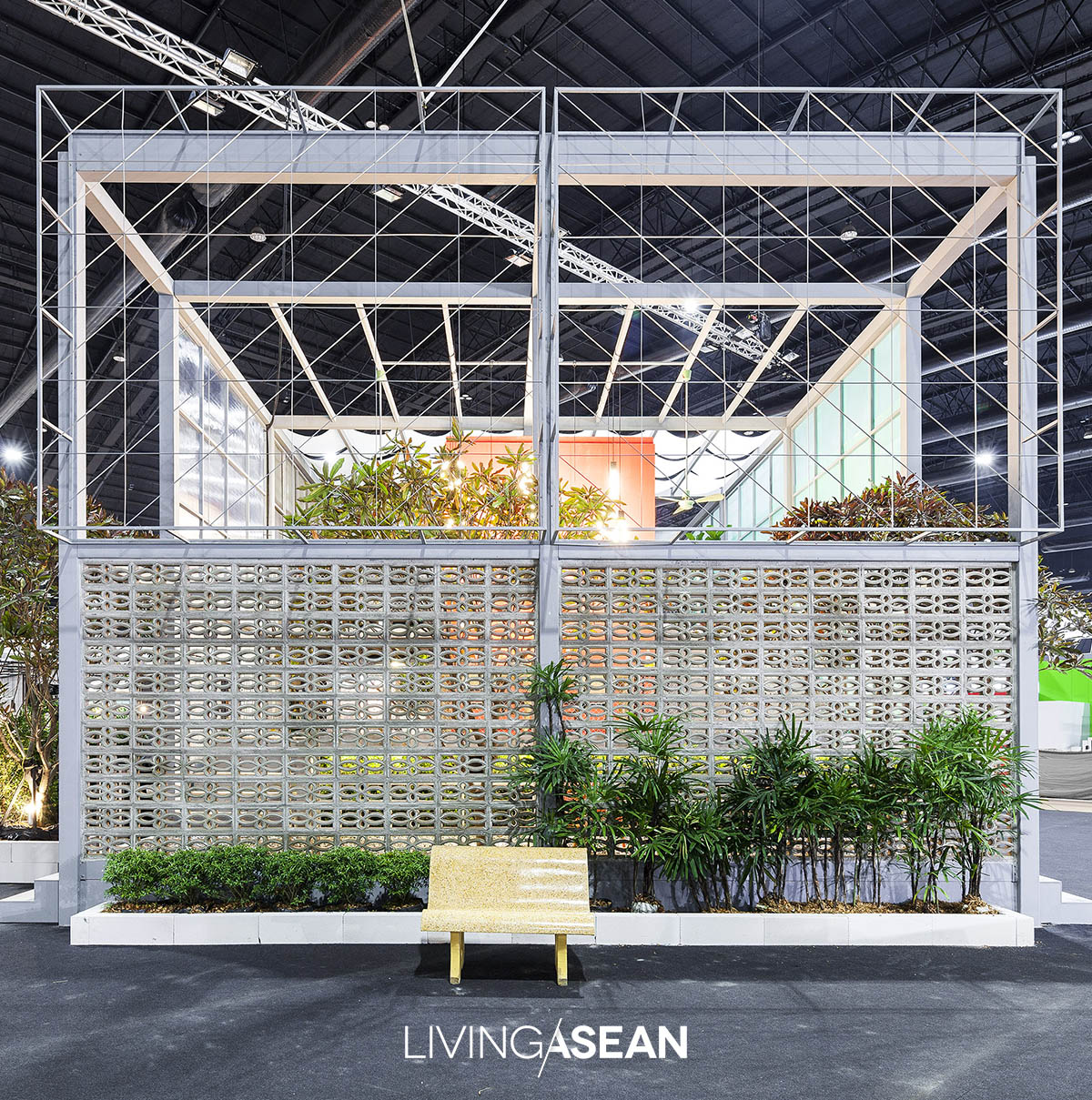
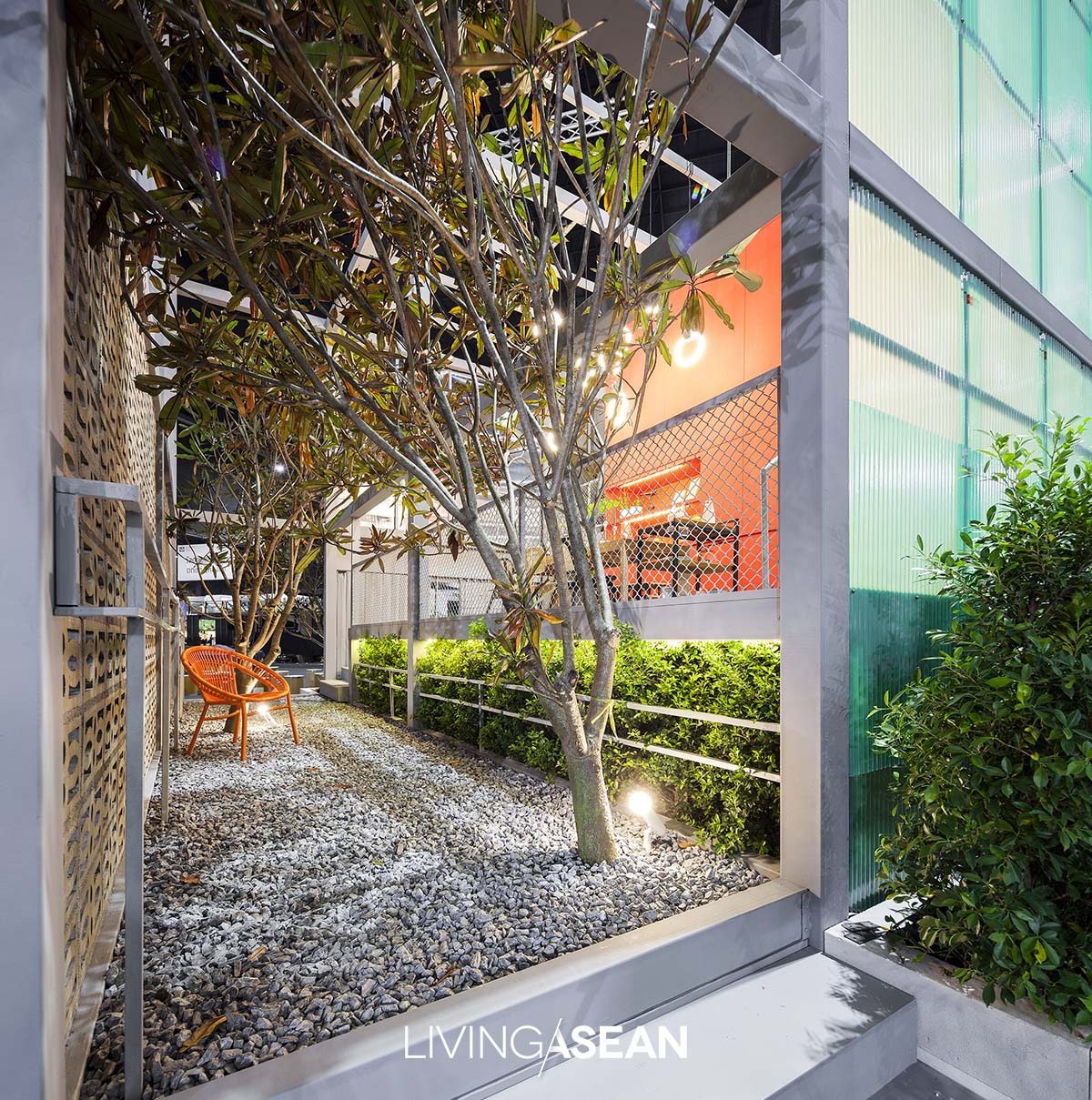
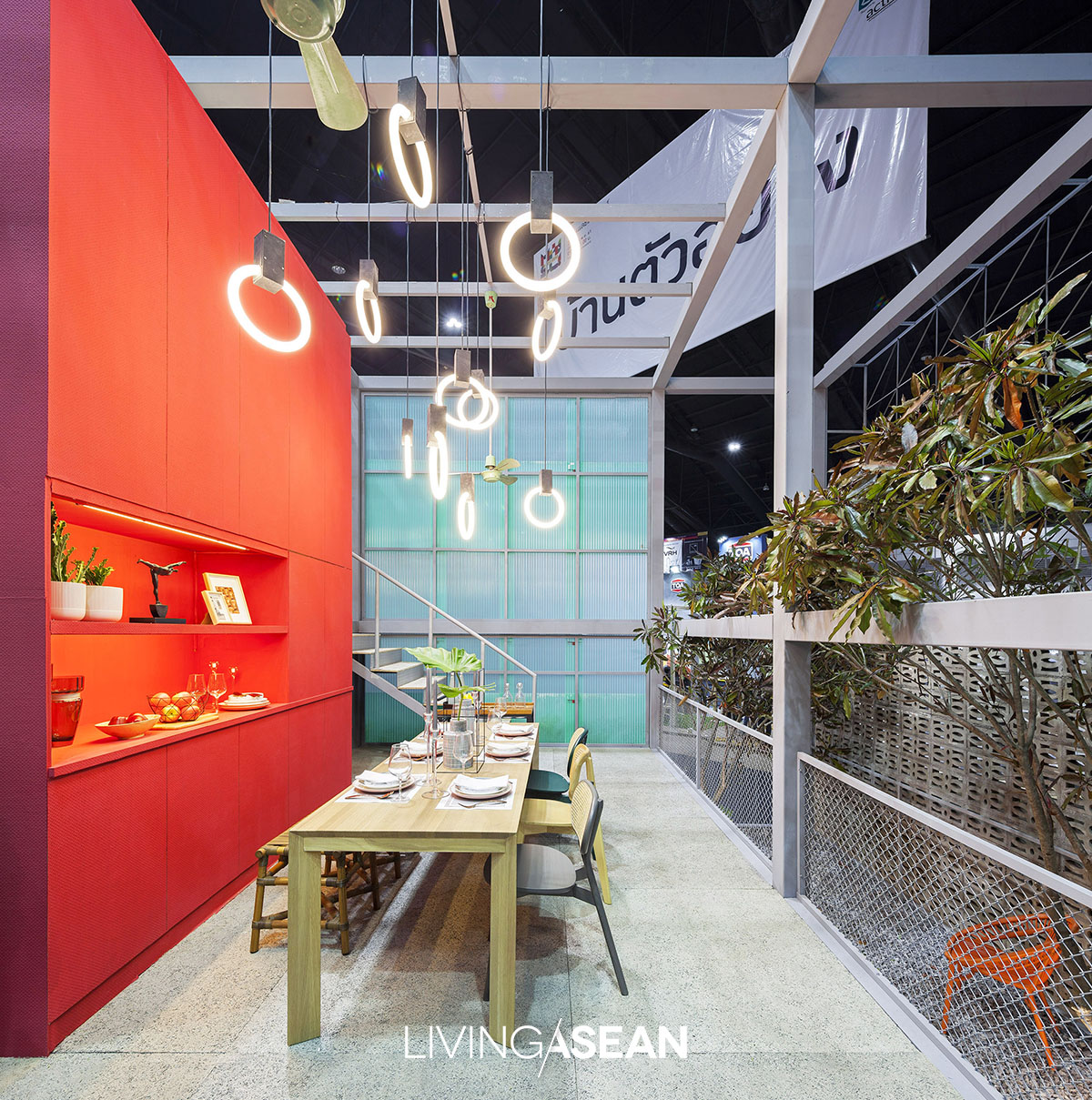

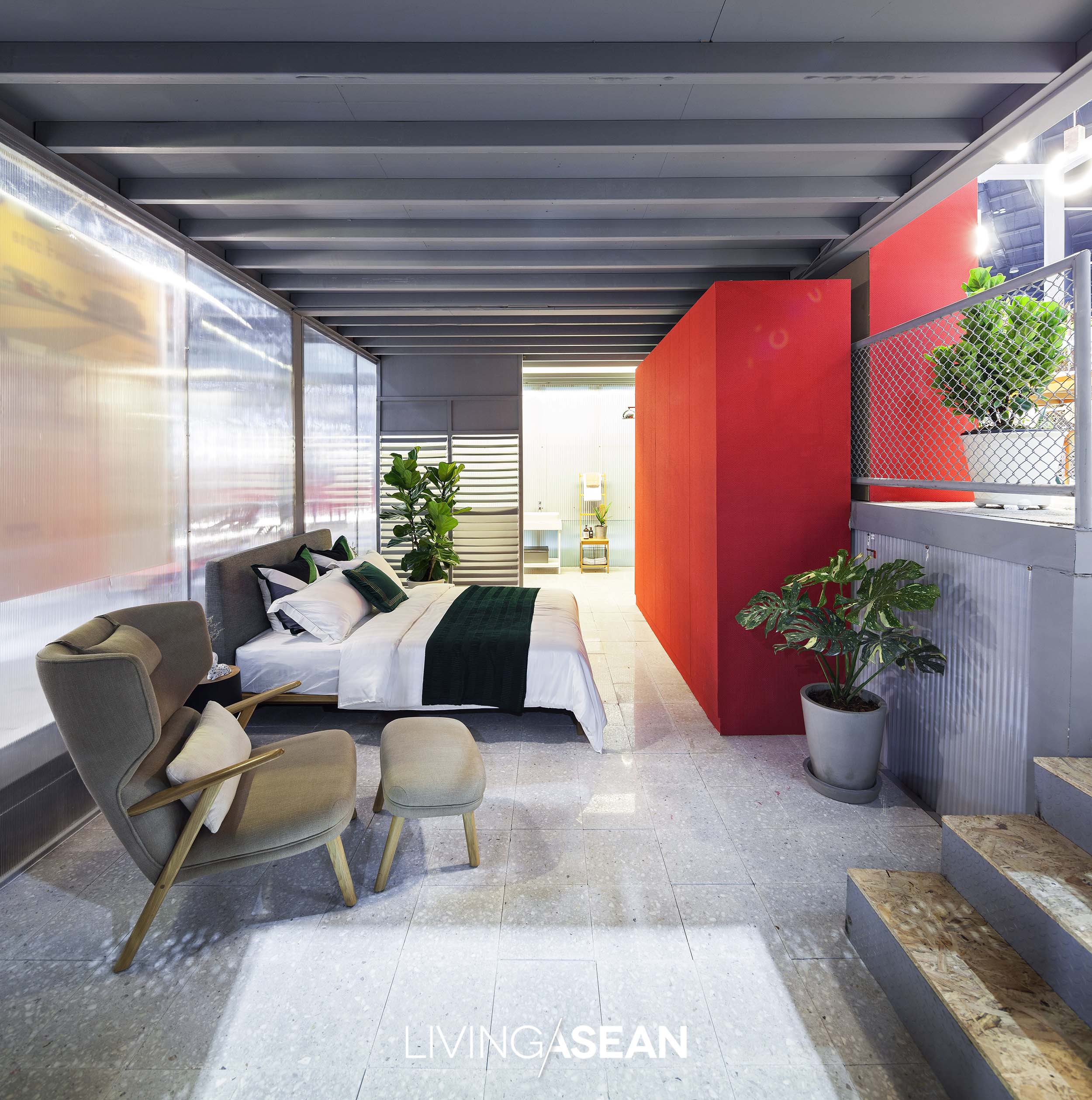
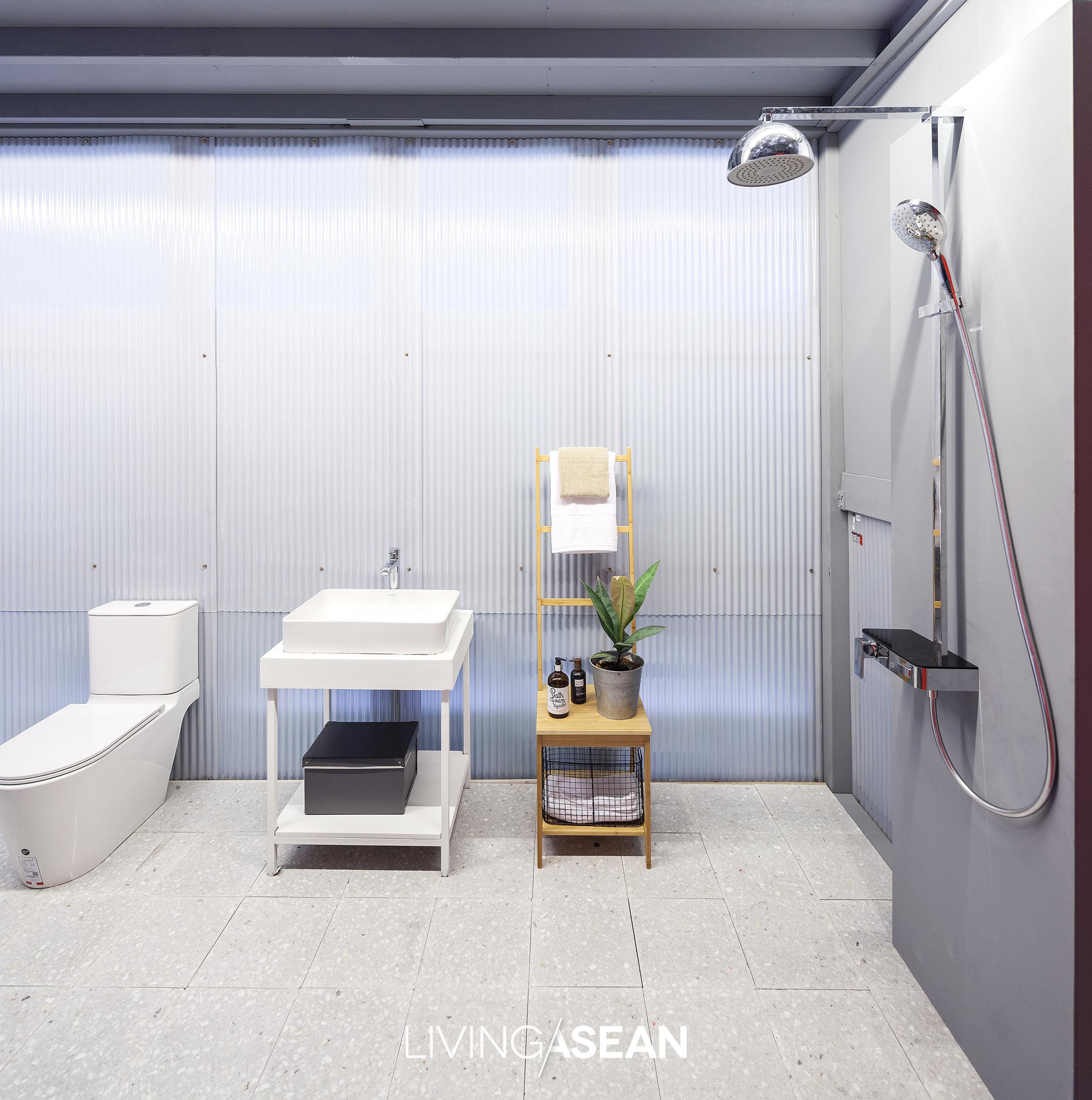
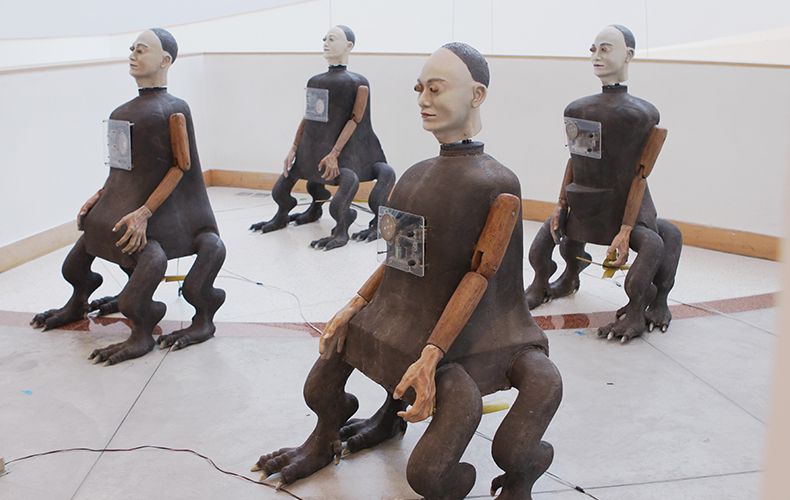
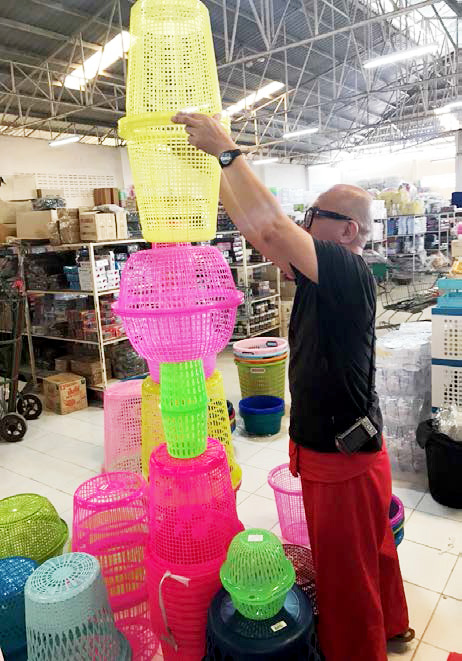
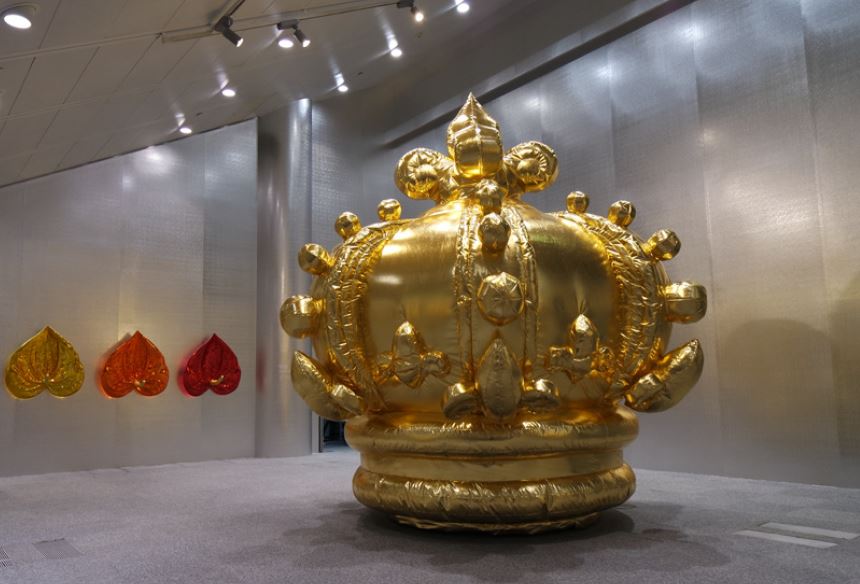
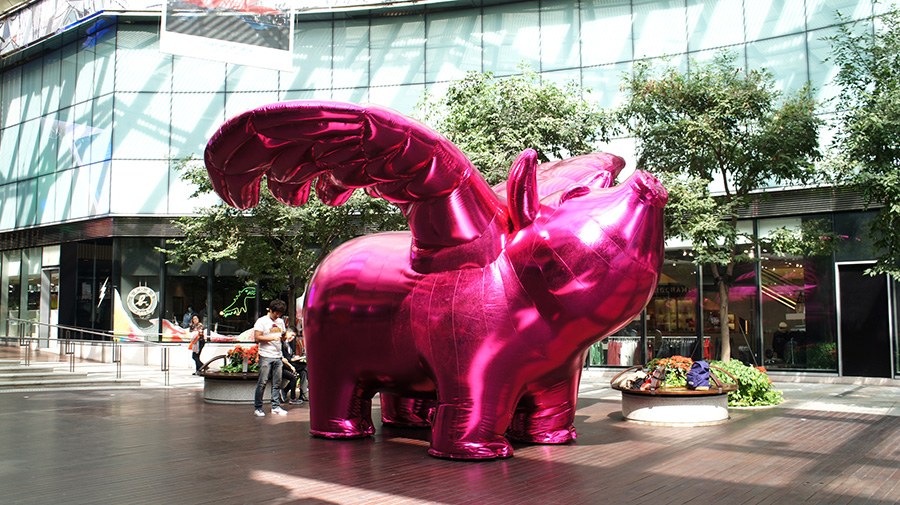
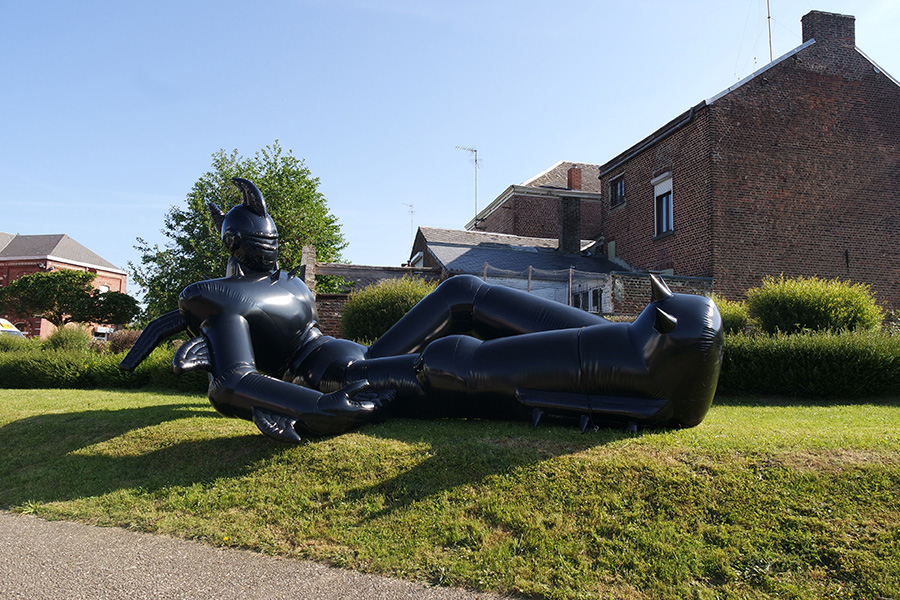
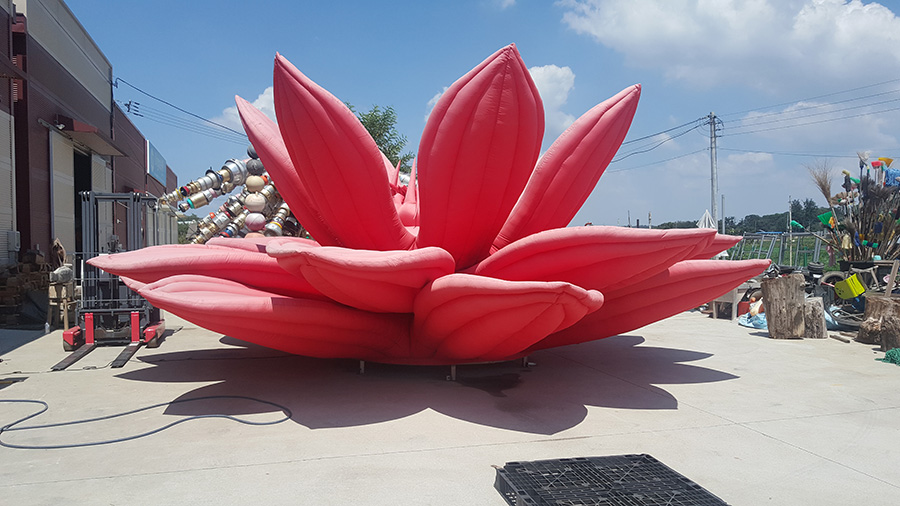
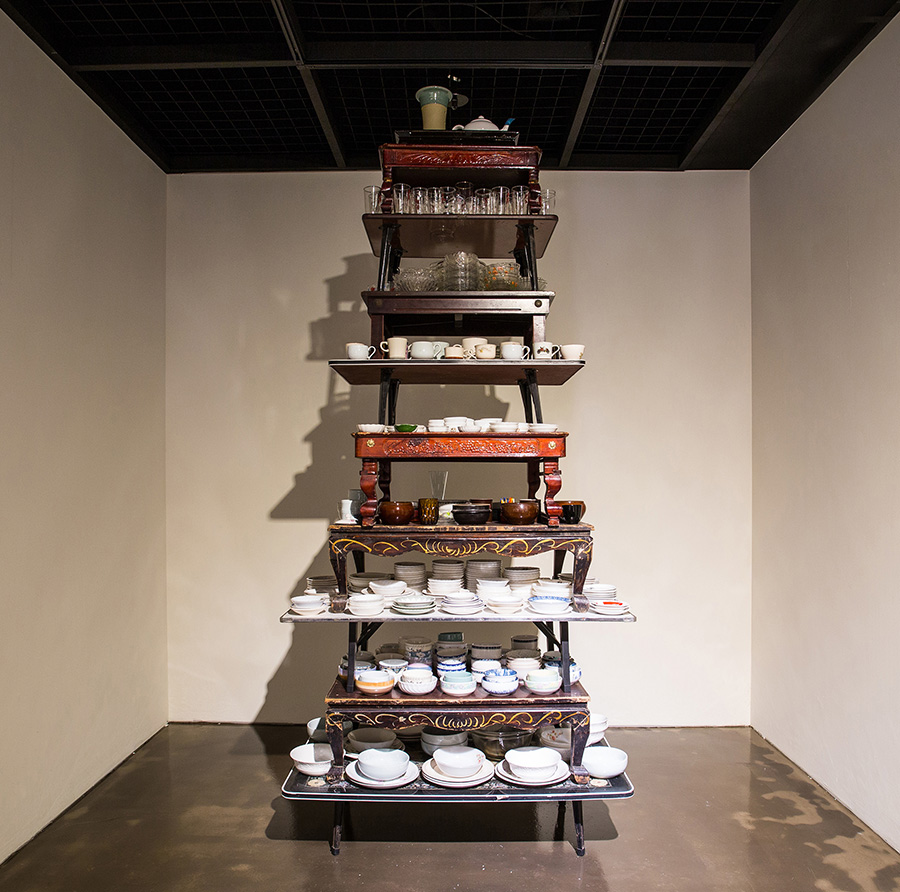
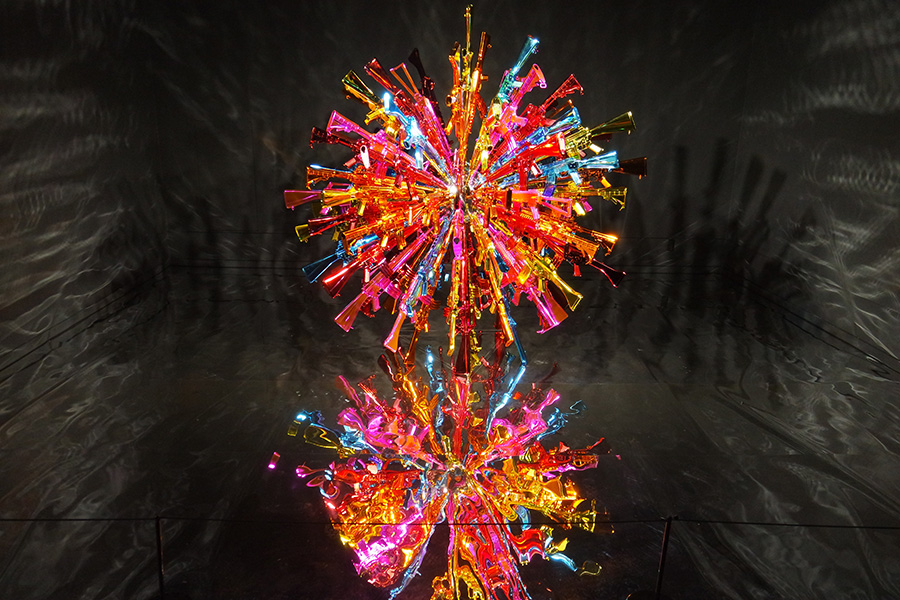
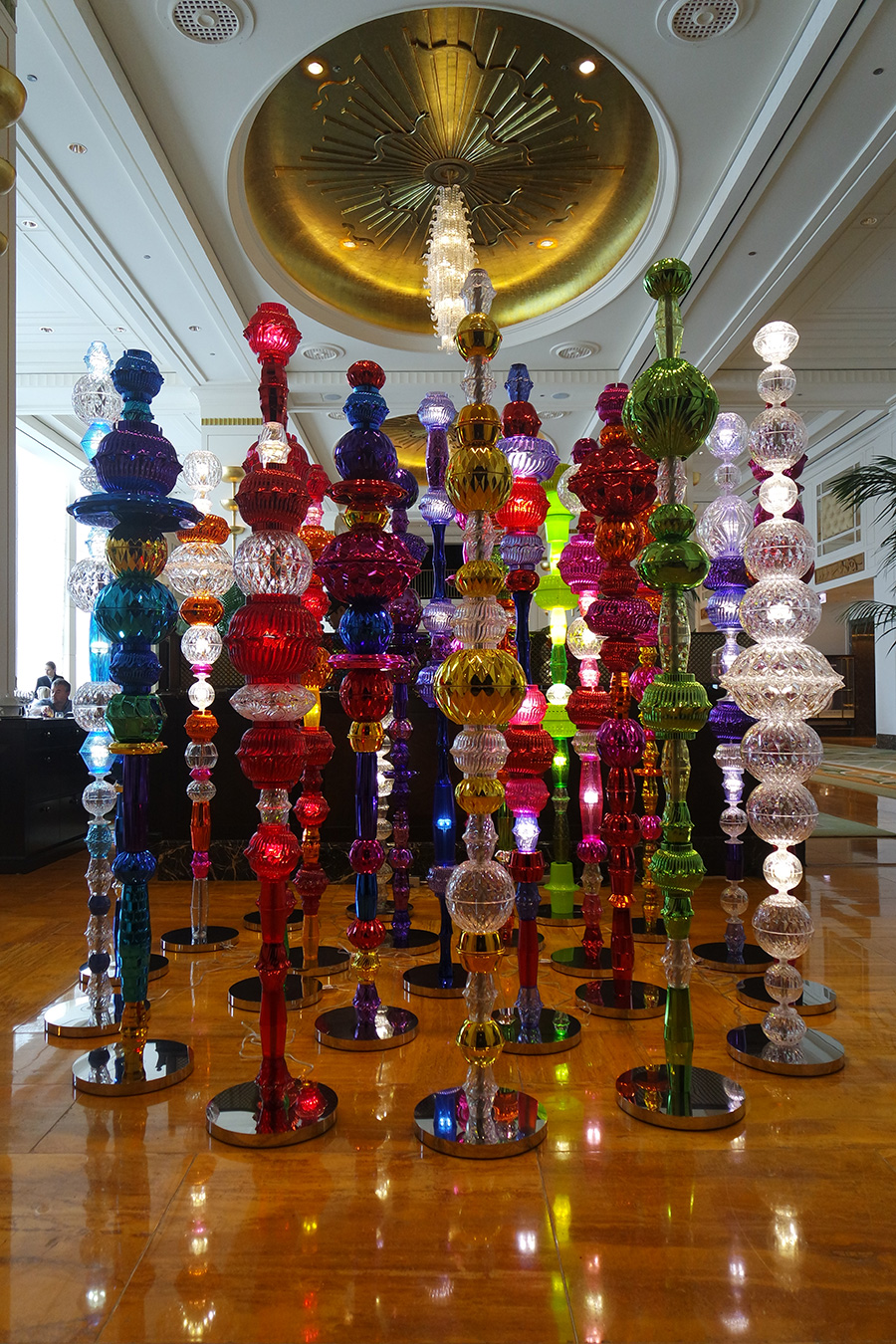
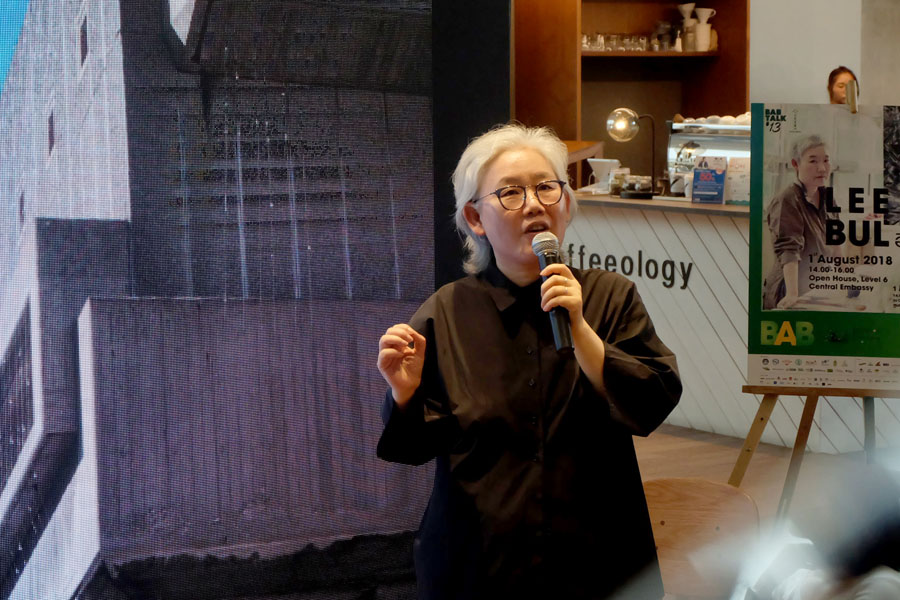
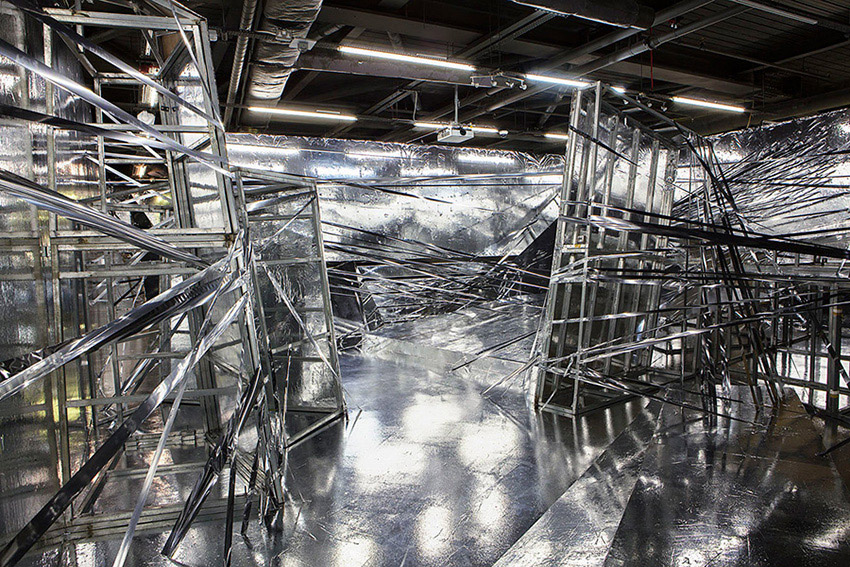
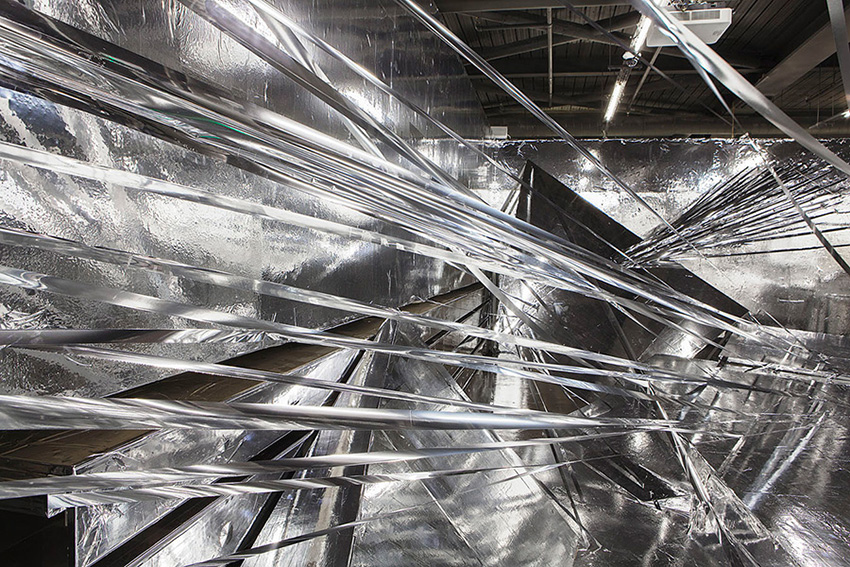

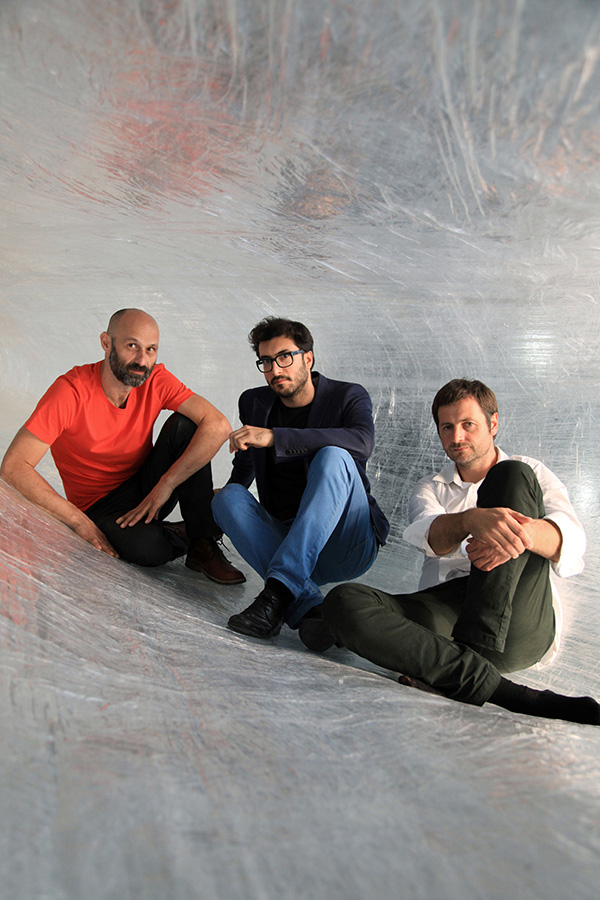

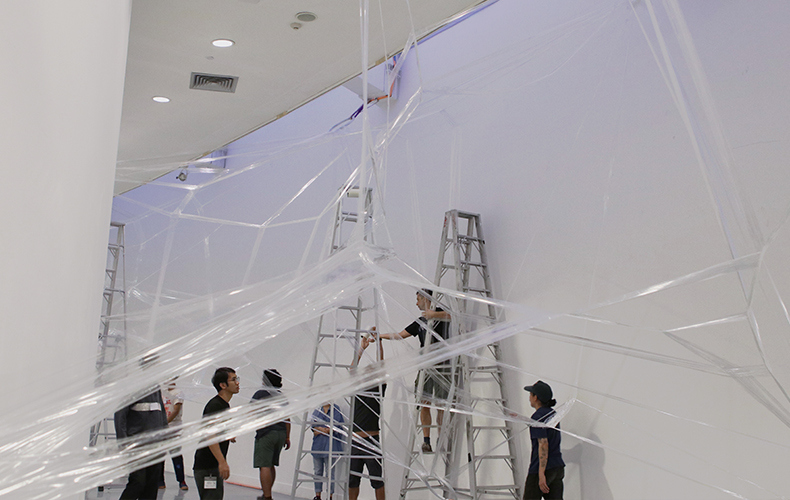
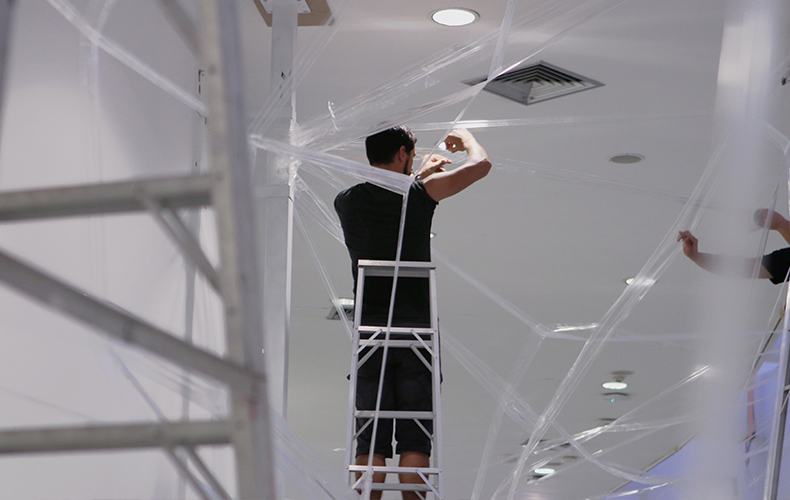





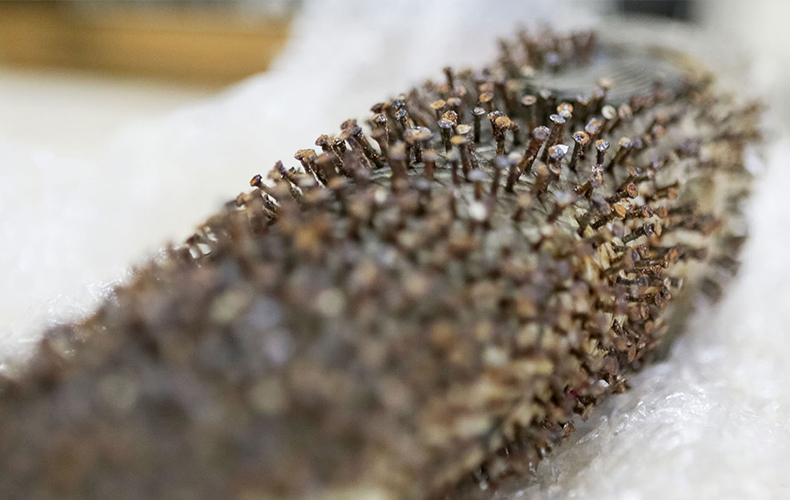


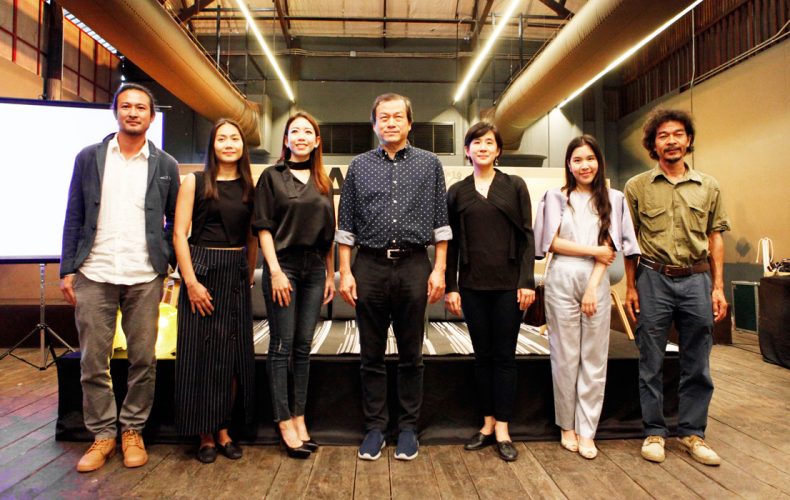
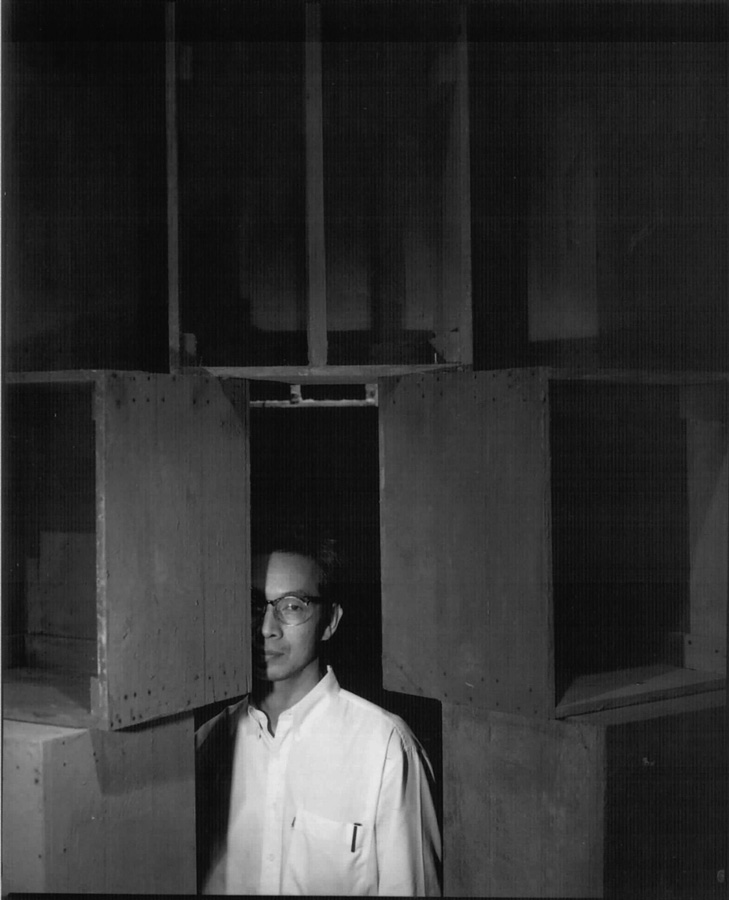


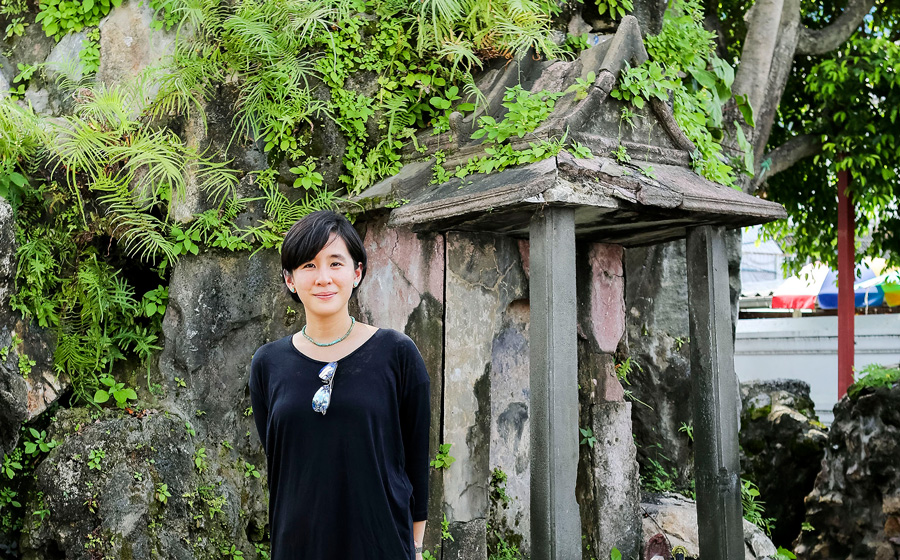
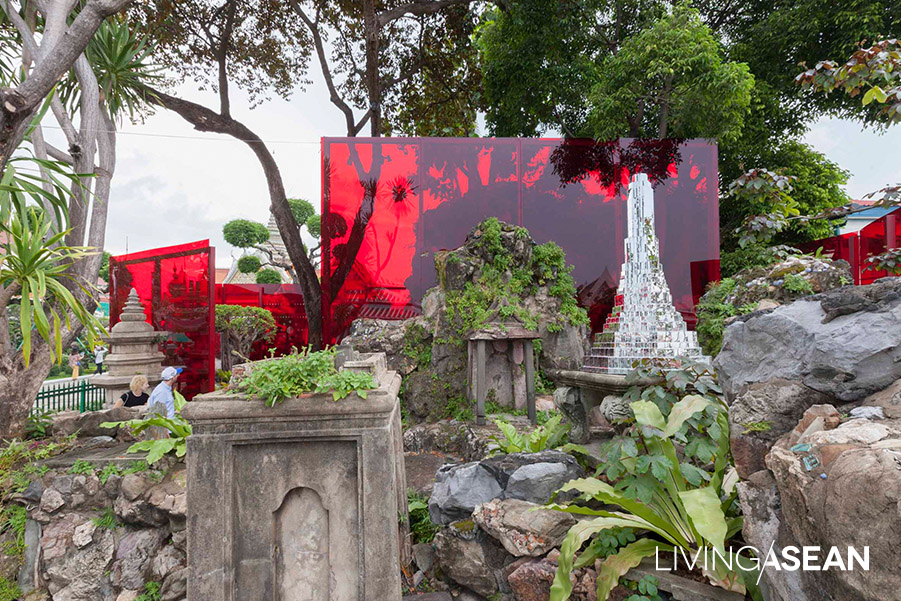
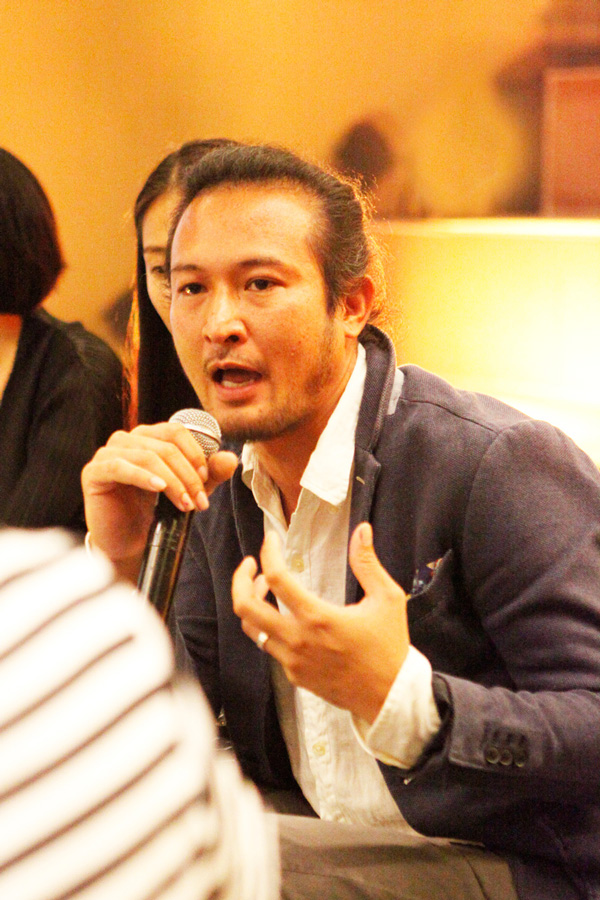
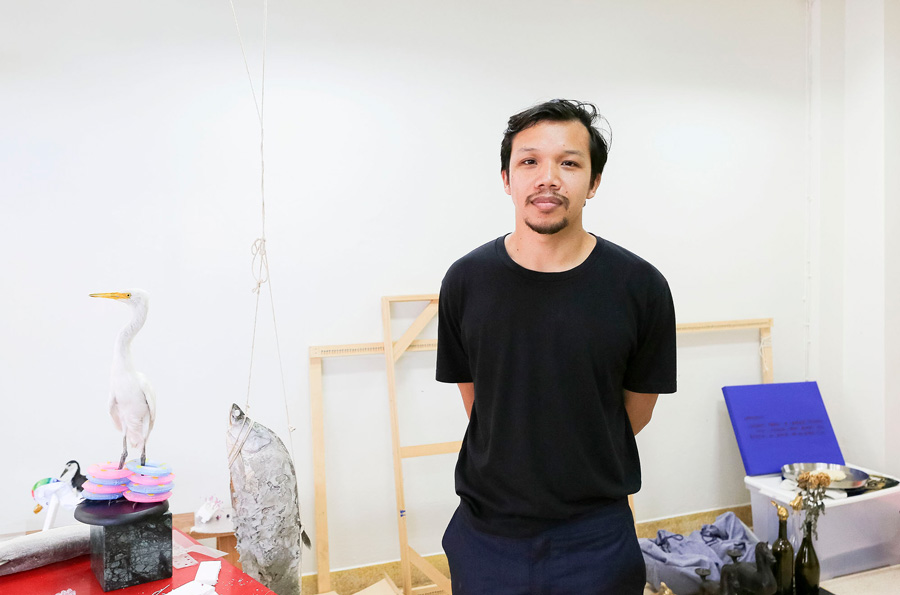
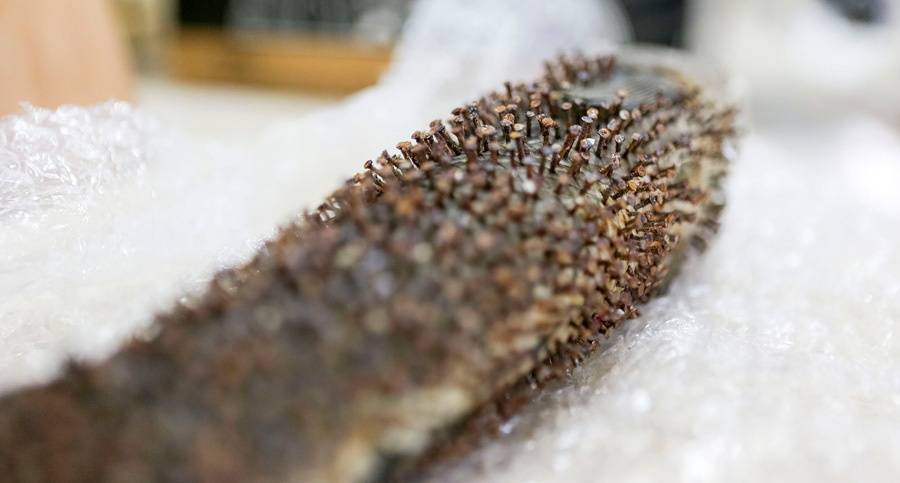
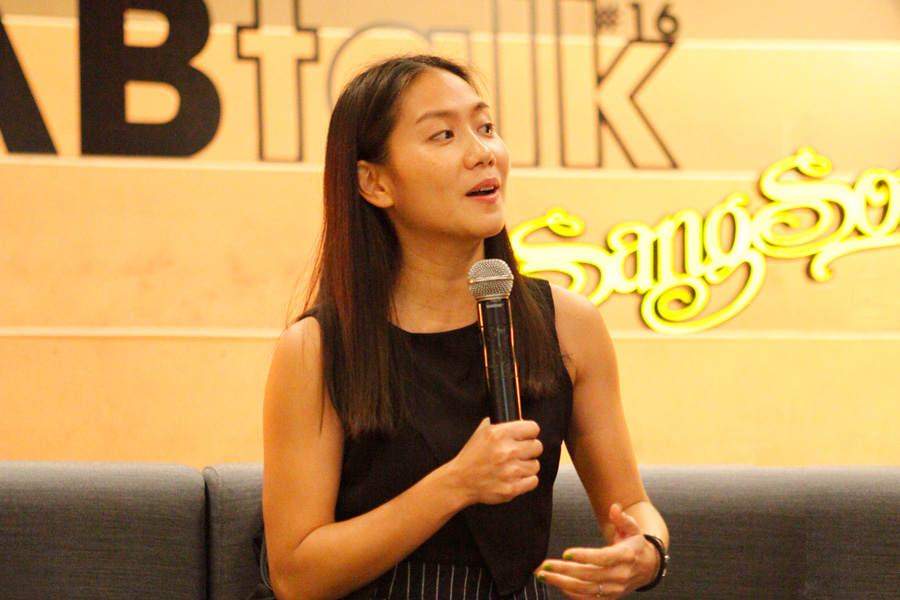
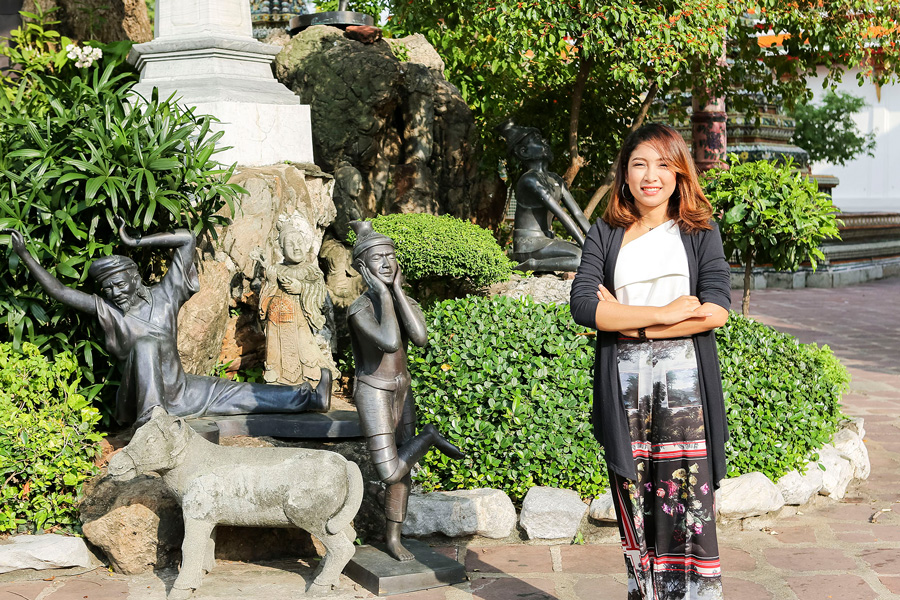 Pannaphan, a mixed-media artist and burning light of the new generation, has received many international awards, debuting with awards of excellence in consecutive years for the project “Jittrakam Bualuang” (Sacred Lotus Painting). Her mixed media works combine painting and installation art with a daring individual talent that plays on societal conflict and satire with a keenness that has brought her rapid domestic and international acclaim. In 2015 her project “Thailand Eyes” was shown at Saatchi Gallery in London, and at only 29 years of age the next year she was one of only a few Thai artists ever so honored as she won the 11th Benesse Prize, emerging from competition with 63 artists from 19 Southeast and South Asian countries at the Singapore Biennale 2016. This resulted in an invitation to exhibit at the Benesse Art Site on Naoshima Island in Japan.
Pannaphan, a mixed-media artist and burning light of the new generation, has received many international awards, debuting with awards of excellence in consecutive years for the project “Jittrakam Bualuang” (Sacred Lotus Painting). Her mixed media works combine painting and installation art with a daring individual talent that plays on societal conflict and satire with a keenness that has brought her rapid domestic and international acclaim. In 2015 her project “Thailand Eyes” was shown at Saatchi Gallery in London, and at only 29 years of age the next year she was one of only a few Thai artists ever so honored as she won the 11th Benesse Prize, emerging from competition with 63 artists from 19 Southeast and South Asian countries at the Singapore Biennale 2016. This resulted in an invitation to exhibit at the Benesse Art Site on Naoshima Island in Japan.